Tag #people
320 papers:
 CHI-PLAY-2019-WohnJESSD #comprehension #question #why
CHI-PLAY-2019-WohnJESSD #comprehension #question #why- Understanding Digital Patronage: Why Do People Subscribe to Streamers on Twitch? (DYW, PJ, PE, JSSJ, MS, PD), pp. 99–110.
 CIKM-2018-YamamotoYF #behaviour #towards #web
CIKM-2018-YamamotoYF #behaviour #towards #web- Exploring People's Attitudes and Behaviors Toward Careful Information Seeking in Web Search (TY, YY, SF), pp. 963–972.
 ICPR-2018-ChengWLY #locality #visual notation
ICPR-2018-ChengWLY #locality #visual notation- Visual Localization of Key Positions for Visually Impaired People (RC, KW, LL, KY), pp. 2893–2898.
 FDG-2017-Compton #game studies #generative
FDG-2017-Compton #game studies #generative- Little procedural people: playing politics with generators (KC), p. 2.
 FDG-2017-FieldsKGFW
FDG-2017-FieldsKGFW - Plagues and people: engineering player participation and prevention in a virtual epidemic (DAF, YBK, MTG, NHF, JW), p. 10.
 VS-Games-2017-DCruzPHSVP #3d #game studies #novel
VS-Games-2017-DCruzPHSVP #3d #game studies #novel- Novel 3D games for people with and without hearing loss (MD, HP, MH, DS, JV, LP), pp. 175–176.
 CASE-2017-FranckAXG #approach #problem
CASE-2017-FranckAXG #approach #problem- An optimization-simulation approach for long term care structure assignment problem for elderly people (TF, VA, XX, RG), pp. 574–579.
 EDM-2016-Kay #learning
EDM-2016-Kay #learning- Enabling people to harness and control EDM for lifelong, life-wide learning (JK), p. 4.
 EDM-2016-Kay16a #learning
EDM-2016-Kay16a #learning- Enabling people to harness and control EDM for lifelong, life-wide learning (JK), pp. 10–20.
 MSR-2016-YangKYI #code review #dataset #mining #overview #process #repository
MSR-2016-YangKYI #code review #dataset #mining #overview #process #repository- Mining the modern code review repositories: a dataset of people, process and product (XY, RGK, NY, HI), pp. 460–463.
 CHI-PLAY-2016-BonsignoreHKVF #game studies #learning
CHI-PLAY-2016-BonsignoreHKVF #game studies #learning- Roles People Play: Key Roles Designed to Promote Participation and Learning in Alternate Reality Games (EB, DLH, KK, AV, AF), pp. 78–90.
 CHI-PLAY-2016-TyackW0 #game studies #what
CHI-PLAY-2016-TyackW0 #game studies #what- The Appeal of MOBA Games: What Makes People Start, Stay, and Stop (AT, PW, DMJ0), pp. 313–325.
 VS-Games-2016-AyedGJAVM #game studies #using
VS-Games-2016-AyedGJAVM #game studies #using- Fall Prevention Serious Games for Elderly People Using RGBD Devices (IA, AG, AJiC, BMA, JV, PMB), pp. 1–3.
 VS-Games-2016-Piedra-Fernandez #artificial reality #communication #using
VS-Games-2016-Piedra-Fernandez #artificial reality #communication #using- Sign Communication for People with Disabilities Using Kinect Technology at Home (JAPF, JJOC, CBB, LIM), pp. 1–2.
 ICPR-2016-OnishiN #interactive #twitter
ICPR-2016-OnishiN #interactive #twitter- Mutual interaction model between the number of people in real space and the number of tweets in virtual space (MO, SN), pp. 2073–2078.
 KDD-2016-Hellerstein
KDD-2016-Hellerstein - People, Computers, and The Hot Mess of Real Data (JMH), p. 7.
 ICSME-2015-KononenkoBGCG #code review #matter #overview #quality #question
ICSME-2015-KononenkoBGCG #code review #matter #overview #quality #question- Investigating code review quality: Do people and participation matter? (OK, OB, LG, YC, MWG), pp. 111–120.
 CHI-PLAY-2015-HarpsteadZNGCSG #game studies #what
CHI-PLAY-2015-HarpsteadZNGCSG #game studies #what- What Drives People: Creating Engagement Profiles of Players from Game Log Data (EH, TZ0, NN, JJG, RC, TS, DG), pp. 369–379.
 FDG-2015-RyanKHMW #game studies
FDG-2015-RyanKHMW #game studies- People Tend to Like Related Games (JOR, EK, TH, MM, NWF).
 CHI-2015-AhmedHCCK #behaviour #privacy #visual notation
CHI-2015-AhmedHCCK #behaviour #privacy #visual notation- Privacy Concerns and Behaviors of People with Visual Impairments (TA, RH, KC, DJC, AK), pp. 3523–3532.
 CHI-2015-BachourWFHRM #game studies #human-computer #online #standard
CHI-2015-BachourWFHRM #game studies #human-computer #online #standard- Provenance for the People: An HCI Perspective on the W3C PROV Standard through an Online Game (KB, RW, MF, TDH, TR, LM), pp. 2437–2446.
 CHI-2015-FlatlaATKS #identification #named
CHI-2015-FlatlaATKS #identification #named- ColourID: Improving Colour Identification for People with Impaired Colour Vision (DRF, ARA, RDT, DLK, CS), pp. 3543–3552.
 CHI-2015-KatanGF #development #interactive #interface #machine learning #using
CHI-2015-KatanGF #development #interactive #interface #machine learning #using- Using Interactive Machine Learning to Support Interface Development Through Workshops with Disabled People (SK, MG, RF), pp. 251–254.
 CHI-2015-LesselAK #analysis
CHI-2015-LesselAK #analysis- Analysis of Recycling Capabilities of Individuals and Crowds to Encourage and Educate People to Separate Their Garbage Playfully (PL, MA, AK), pp. 1095–1104.
 CHI-2015-McNaneyBHSJWGBR #design #game studies
CHI-2015-McNaneyBHSJWGBR #design #game studies- Designing for and with People with Parkinson’s: A Focus on Exergaming (RM, MB, AH, GS, DJ, MW, BG, GB, LR, PO), pp. 501–510.
 CHI-2015-McNaneyPVBZO #named #speech
CHI-2015-McNaneyPVBZO #named #speech- LApp: A Speech Loudness Application for People with Parkinson’s on Google Glass (RM, IP, JV, MB, PZ, PO), pp. 497–500.
 CHI-2015-StrohmayerCB #learning
CHI-2015-StrohmayerCB #learning- Exploring Learning Ecologies among People Experiencing Homelessness (AS, RC, MB), pp. 2275–2284.
 CHI-2015-WaddingtonLGHH #design #game studies #video
CHI-2015-WaddingtonLGHH #design #game studies #video- Participatory Design of Therapeutic Video Games for Young People with Neurological Vision Impairment (JW, CL, KMG, KH, TLH), pp. 3533–3542.
 CHI-2015-WarshawMWKBS #algorithm #comprehension
CHI-2015-WarshawMWKBS #algorithm #comprehension- Can an Algorithm Know the “Real You”?: Understanding People’s Reactions to Hyper-personal Analytics Systems (JW, TM, SW, CK, MNB, BAS), pp. 797–806.
 CSCW-2015-SharmaC #modelling #resource management
CSCW-2015-SharmaC #modelling #resource management- Studying and Modeling the Connection between People’s Preferences and Content Sharing (AS, DC), pp. 1246–1257.
 CSCW-2015-ZyskowskiMBGK #challenge #comprehension
CSCW-2015-ZyskowskiMBGK #challenge #comprehension- Accessible Crowdwork?: Understanding the Value in and Challenge of Microtask Employment for People with Disabilities (KZ, MRM, JPB, MLG, SKK), pp. 1682–1693.
 DHM-HM-2015-ShodaYSS #analysis #behaviour #how
DHM-HM-2015-ShodaYSS #analysis #behaviour #how- Exploring How People Collaborate with a Stranger: — Analyses of Verbal and Nonverbal Behaviors in Abstract Art Reproduction (HS, TY, NS, MS), pp. 379–388.
 DUXU-DD-2015-GuoSYL
DUXU-DD-2015-GuoSYL - Personal Museum — A New Museum that Focus on Emotional Relationship Between People and Belongings (LG, YS, SY, HBL), pp. 502–512.
 HCI-UC-2015-HarringtonFBPS
HCI-UC-2015-HarringtonFBPS - Digital Wellbeing Assessments for People Affected by Dementia (KH, PF, MAB, JP, SS), pp. 409–418.
 SIGIR-2015-Belkin
SIGIR-2015-Belkin - Salton Award Lecture: People, Interacting with Information (NJB), pp. 1–2.
 GTTSE-2015-SingerSFZG #development
GTTSE-2015-SingerSFZG #development- People Analytics in Software Development (LS, MADS, FMFF, AZ, DMG), pp. 124–153.
 CASE-2015-SolisTR #multi #towards
CASE-2015-SolisTR #multi #towards- Towards developing a multipurpose assistive vehicle robot capable of providing assistance to caregivers and support to elderly people (JS, TDT, JPdlR), pp. 1145–1150.
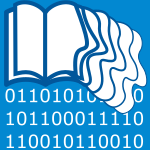 JCDL-2014-FrommholzGLKB #crowdsourcing
JCDL-2014-FrommholzGLKB #crowdsourcing- Great War stories told by the people — Crowdsourced cultural heritage in digital museums (IF, DG, HL, AK, GB), pp. 419–420.
 CHI-2014-ChengLLSB #framework #platform
CHI-2014-ChengLLSB #framework #platform- Haptic turk: a motion platform based on people (LPC, PL, PL, CS, PB), pp. 3463–3472.
 CHI-2014-GarbettCEGO #interface #trust
CHI-2014-GarbettCEGO #interface #trust- Finding “real people”: trust and diversity in the interface between professional and citizen journalists (ATG, RC, PE, MG, PO), pp. 3015–3024.
 CHI-2014-GerlingMBMO #game studies #persuasion #towards #using
CHI-2014-GerlingMBMO #game studies #persuasion #towards #using- The effects of embodied persuasive games on player attitudes toward people using wheelchairs (KMG, RLM, MVB, MM, RO), pp. 3413–3422.
 CHI-2014-HydeKHC #behaviour #elicitation #video
CHI-2014-HydeKHC #behaviour #elicitation #video- Conversing with children: cartoon and video people elicit similar conversational behaviors (JH, SBK, JKH, EJC), pp. 1787–1796.
 CHI-2014-JoshiRRESKPSRSSVR
CHI-2014-JoshiRRESKPSRSSVR - Supporting treatment of people living with HIV / AIDS in resource limited settings with IVRs (ANJ, MR, DR, NE, PS, NK, SP, DS, RR, DGS, KS, EV, RR), pp. 1595–1604.
 CHI-2014-McNaneyVRBZPO
CHI-2014-McNaneyVRBZPO - Exploring the acceptability of google glass as an everyday assistive device for people with parkinson’s (RM, JV, DR, MB, PZ, IP, PO), pp. 2551–2554.
 CHI-2014-RogersPBVMV
CHI-2014-RogersPBVMV - Never too old: engaging retired people inventing the future with MaKey MaKey (YR, JP, MB, KV, GM, FV), pp. 3913–3922.
 CHI-2014-SinghKJFTKBW #design #physics #process
CHI-2014-SinghKJFTKBW #design #physics #process- Motivating people with chronic pain to do physical activity: opportunities for technology design (AS, AK, JJ, AF, ATJ, NK, NBB, ACdCW), pp. 2803–2812.
 CHI-2014-SiriarayaA #case study #experience
CHI-2014-SiriarayaA #case study #experience- Recreating living experiences from past memories through virtual worlds for people with dementia (PS, CSA), pp. 3977–3986.
 CHI-2014-VaisutisBRVDNB #social
CHI-2014-VaisutisBRVDNB #social- Invisible connections: investigating older people’s emotions and social relations around objects (KV, MB, TR, FV, JD, BN, LB), pp. 1937–1940.
 CHI-2014-WeigelMS #comprehension #how #mobile
CHI-2014-WeigelMS #comprehension #how #mobile- More than touch: understanding how people use skin as an input surface for mobile computing (MW, VM, JS), pp. 179–188.
 CHI-2014-YeMOF #mobile #smarttech #visual notation
CHI-2014-YeMOF #mobile #smarttech #visual notation- Current and future mobile and wearable device use by people with visual impairments (HY, MM, UO, LF), pp. 3123–3132.
 CSCW-2014-MillerZGG #collaboration #learning #research
CSCW-2014-MillerZGG #collaboration #learning #research- Pair research: matching people for collaboration, learning, and productivity (RCM, HZ, EG, EG), pp. 1043–1048.
 CSCW-2014-MitraG #predict
CSCW-2014-MitraG #predict- The language that gets people to give: phrases that predict success on kickstarter (TM, EG), pp. 49–61.
 CSCW-2014-VitakK #facebook #how #process #quote
CSCW-2014-VitakK #facebook #how #process #quote- “You can’t block people offline”: examining how facebook’s affordances shape the disclosure process (JV, JK), pp. 461–474.
 DUXU-DP-2014-AncientG #design #interface
DUXU-DP-2014-AncientG #design #interface- Considering People Living with Dementia When Designing Interfaces (CA, AG), pp. 113–123.
 DUXU-DP-2014-DiasPdS #communication #design #interface #multimodal #named
DUXU-DP-2014-DiasPdS #communication #design #interface #multimodal #named- TAC-ACCESS — Technologies to Support Communication from Interfaces Accessible and Multimodal for People with Disabilities and Diversity: Context-Centered Design of Usage (CdOD, LMP, CdCL, EGS), pp. 141–151.
 DUXU-ELAS-2014-GoodS #design #health #interface #web
DUXU-ELAS-2014-GoodS #design #health #interface #web- Accessing Web Based Health Care and Resources for Mental Health: Interface Design Considerations for People Experiencing Mental Illness (AG, AS), pp. 25–33.
 DUXU-ELAS-2014-MahmoodST #content management #user interface
DUXU-ELAS-2014-MahmoodST #content management #user interface- Content Management and User Interface for Uneducated People (ZM, SSS, ST), pp. 432–441.
 DUXU-TMT-2014-Al-RazganAA #heuristic #mobile #usability
DUXU-TMT-2014-Al-RazganAA #heuristic #mobile #usability- Heuristics for Evaluating the Usability of Mobile Launchers for Elderly People (MSAR, HSAK, MDAS), pp. 415–424.
 HCI-AS-2014-FacanhaVPCS #mobile #visual notation
HCI-AS-2014-FacanhaVPCS #mobile #visual notation- Touchscreen Mobile Phones Virtual Keyboarding for People with Visual Disabilities (ARF, WV, MCP, MdBC, JS), pp. 134–145.
 HCI-AS-2014-FerreiraB #analysis #elicitation #requirements #semantics
HCI-AS-2014-FerreiraB #analysis #elicitation #requirements #semantics- Eliciting Accessibility Requirements for People with Hearing Loss: A Semantic and Norm Analysis (MAMF, RB), pp. 277–288.
 HCI-AS-2014-MurrayWHSMGBTSCSH #animation #interactive #physics #process #question
HCI-AS-2014-MurrayWHSMGBTSCSH #animation #interactive #physics #process #question- Can a Theory-Informed Interactive Animation Increase Intentions to Engage in Physical Activity in Young People with Asthma? (JM, BW, GH, SS, JM, DG, GB, ST, FS, LC, AS, SH), pp. 289–300.
 LCT-NLE-2014-Jo0L #analysis #empirical
LCT-NLE-2014-Jo0L #analysis #empirical- Empirical Analysis of Changes in Human Creativity in People Who Work with Humanoid Robots and Their Avatars (DJ, JGL, KCL), pp. 273–281.
 LCT-TRE-2014-Garcia-PenalvoGO #development #mobile #repository
LCT-TRE-2014-Garcia-PenalvoGO #development #mobile #repository- Mobile Apps for Older Users — The Development of a Mobile Apps Repository for Older People (FJGP, MÁCG, VMO), pp. 117–126.
 ICEIS-v2-2014-BeenK #analysis #approach #internet #online
ICEIS-v2-2014-BeenK #analysis #approach #internet #online- Finding You on the Internet — An Approach for Finding On-line Presences of People for Fraud Risk Analysis (HB, MvK), pp. 697–706.
 ICEIS-v2-2014-ProcaciSA #analysis #community #metric #online #reduction #reliability
ICEIS-v2-2014-ProcaciSA #analysis #community #metric #online #reduction #reliability- Finding Reliable People in Online Communities of Questions and Answers — Analysis of Metrics and Scope Reduction (TBP, SWMS, LCVdA), pp. 526–535.
 ICEIS-v3-2014-ZouhaierHA #adaptation #approach #user interface
ICEIS-v3-2014-ZouhaierHA #adaptation #approach #user interface- A MDA-based Approach for Enabling Accessibility Adaptation of User Interface for Disabled People (LZ, YBH, LJBA), pp. 120–127.
 CIKM-2014-LiuLYDZZT #named
CIKM-2014-LiuLYDZZT #named- AMiner-mini: A People Search Engine for University (JL, DL, XY, LD, TZ, YZ, JT), pp. 2069–2071.
 CIKM-2014-RenTOS #how #scalability #web
CIKM-2014-RenTOS #how #scalability #web- How People Use the Web in Large Indoor Spaces (YR, MT, KO, MS), pp. 1879–1882.
 CIKM-2014-SpirinHDKB #analysis #facebook #graph #network #online #query #scalability #social
CIKM-2014-SpirinHDKB #analysis #facebook #graph #network #online #query #scalability #social- People Search within an Online Social Network: Large Scale Analysis of Facebook Graph Search Query Logs (NVS, JH, MD, KGK, MB), pp. 1009–1018.
 ICPR-2014-HalsteadDSF #approach #database #semantics #video
ICPR-2014-HalsteadDSF #approach #database #semantics #video- Locating People in Video from Semantic Descriptions: A New Database and Approach (MH, SD, SS, CF), pp. 4501–4506.
 ICPR-2014-KimBKC #multi #online
ICPR-2014-KimBKC #multi #online- MAP-Based Online Data Association for Multiple People Tracking in Crowded Scenes (SWK, MB, KK, JYC), pp. 1212–1217.
 ICPR-2014-MekonnenLHB #detection #optimisation
ICPR-2014-MekonnenLHB #detection #optimisation- People Detection with Heterogeneous Features and Explicit Optimization on Computation Time (AAM, FL, AH, CB), pp. 4322–4327.
 ICPR-2014-SantanaLH #geometry #identification #semantics
ICPR-2014-SantanaLH #geometry #identification #semantics- People Semantic Description and Re-identification from Point Cloud Geometry (MCS, JLN, DHS), pp. 4702–4707.
 ICPR-2014-TabuchiTDIMKK #estimation #memory management #multi
ICPR-2014-TabuchiTDIMKK #estimation #memory management #multi- Spatial People Density Estimation from Multiple Viewpoints by Memory Based Regression (YT, TT, DD, II, HM, TK, KK), pp. 2209–2214.
 KDD-2014-Horvitz #predict
KDD-2014-Horvitz #predict- Data, predictions, and decisions in support of people and society (EH), p. 2.
 KDD-2014-MukherjeeWD #community #health
KDD-2014-MukherjeeWD #community #health- People on drugs: credibility of user statements in health communities (SM, GW, CDNM), pp. 65–74.
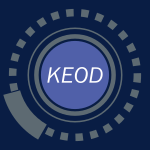 KEOD-2014-Aalst #mining #process #what
KEOD-2014-Aalst #mining #process #what- No Knowledge Without Processes — Process Mining as a Tool to Find Out What People and Organizations Really Do (WMPvdA), pp. 1–11.
 RecSys-2014-BadenesBCGHMNPSSXYZ #automation #recommendation #social #social media
RecSys-2014-BadenesBCGHMNPSSXYZ #automation #recommendation #social #social media- System U: automatically deriving personality traits from social media for people recommendation (HB, MNB, JC, LG, EMH, JM, JWN, AP, JS, BAS, YX, HY, MXZ), pp. 373–374.
 RecSys-2014-Sharma #modelling #social
RecSys-2014-Sharma #modelling #social- Modeling the effect of people’s preferences and social forces on adopting and sharing items (AS), pp. 421–424.
 SIGIR-2014-HuangTK #distance #network
SIGIR-2014-HuangTK #distance #network- The role of network distance in linkedin people search (SWH, DT, KK), pp. 867–870.
 SAC-2014-NunesNR #contest #game studies
SAC-2014-NunesNR #contest #game studies- Motivating people to perform better in exergames: competition in virtual environments (MBN, LPN, VR), pp. 970–975.
 CHI-2013-AgapieGQ #query
CHI-2013-AgapieGQ #query- Leading people to longer queries (EA, GG, PQ), pp. 3019–3022.
 CHI-2013-AnthonyKF
CHI-2013-AnthonyKF - Analyzing user-generated youtube videos to understand touchscreen use by people with motor impairments (LA, YK, LF), pp. 1223–1232.
 CHI-2013-BradyMZWB #challenge #visual notation
CHI-2013-BradyMZWB #challenge #visual notation- Visual challenges in the everyday lives of blind people (ELB, MRM, YZ, SW, JPB), pp. 2117–2126.
 CHI-2013-HaradaSAKTA #experience #visual notation
CHI-2013-HaradaSAKTA #experience #visual notation- Accessible photo album: enhancing the photo sharing experience for people with visual impairment (SH, DS, DWA, SK, HT, CA), pp. 2127–2136.
 CHI-2013-KangBK #design #internet #policy #why
CHI-2013-KangBK #design #internet #policy #why- Why do people seek anonymity on the internet?: informing policy and design (RK, SB, SBK), pp. 2657–2666.
 CHI-2013-LinH #how #image #modelling
CHI-2013-LinH #how #image #modelling- Modeling how people extract color themes from images (SL, PH), pp. 3101–3110.
 CHI-2013-VinesCWMO #configuration management #design #how
CHI-2013-VinesCWMO #configuration management #design #how- Configuring participation: on how we involve people in design (JV, RC, PCW, JCM, PO), pp. 429–438.
 DHM-SET-2013-AlmAGEVD #interactive
DHM-SET-2013-AlmAGEVD #interactive- Supporting Conversation for People with Dementia by Introducing a Computer-Based Third Element to the Interaction (NA, AA, GG, ME, PV, RD), pp. 143–149.
 DUXU-CXC-2013-KuramotoIYT #exclamation #gamification
DUXU-CXC-2013-KuramotoIYT #exclamation #gamification- Stand Up, Heroes! : Gamification for Standing People on Crowded Public Transportation (IK, TI, KY, YT), pp. 538–547.
 DUXU-NTE-2013-Attisano #named
DUXU-NTE-2013-Attisano #named- SustainDesign — A Project with Young Creative People (RA), pp. 20–29.
 DUXU-NTE-2013-BarrosSFCC #analysis #artificial reality
DUXU-NTE-2013-BarrosSFCC #analysis #artificial reality- Virtual Reality Immersion: An Important Tool for Diagnostic Analysis and Rehabilitation of People with Disabilities (HOB, MMS, ELRF, WC, FC), pp. 337–344.
 DUXU-NTE-2013-CombeHD #design #self #usability
DUXU-NTE-2013-CombeHD #design #self #usability- Designing Technology for Older People — The Role of Technical Self-confidence in Usability of an Inclusive Heating Control (NC, DH, HD), pp. 49–56.
 DUXU-WM-2013-MeloSCC #evaluation #human-computer #interface #visual notation #web
DUXU-WM-2013-MeloSCC #evaluation #human-computer #interface #visual notation #web- Ergonomic Evaluation of Websites Focusing on the Human-Computer Interface so as to Improve Access to the Web Especially by People with Visual Disabilities (ARM, MMS, FC, WC), pp. 257–264.
 HCI-III-2013-YildizTIS
HCI-III-2013-YildizTIS - Tracking People with Active Cameras (AY, NT, YI, KS), pp. 270–279.
 HCI-IMT-2013-CarusoCLMRSSC #architecture #named #physics
HCI-IMT-2013-CarusoCLMRSSC #architecture #named #physics- My-World-in-My-Tablet: An Architecture for People with Physical Impairment (MC, FC, FL, MM, AR, FS, LS, TC), pp. 637–647.
 HCI-IMT-2013-Chen13b #gesture
HCI-IMT-2013-Chen13b #gesture- Gesture-Based Applications for Elderly People (WC), pp. 186–195.
 HCI-UC-2013-KobayashiYOO #community #problem
HCI-UC-2013-KobayashiYOO #community #problem- The Present Condition and Problems for Elderly People Participating in Communities (NK, SY, KO, AO), pp. 307–313.
 HCI-UC-2013-KohPC #question
HCI-UC-2013-KohPC #question- Do All People Enjoy the Benefits from Technology Innovation? (YJK, JHP, BDC), pp. 402–410.
 HIMI-D-2013-UedaA #predict #using
HIMI-D-2013-UedaA #predict #using- Prediction of the Concern of People Using CGM (YU, YA), pp. 284–292.
 HIMI-HSM-2013-HosonoMINSMT #communication
HIMI-HSM-2013-HosonoMINSMT #communication- The Urgent Communication System for Deaf and Language Dysfunction People (NH, FM, TI, MN, MS, HM, YT), pp. 269–274.
 HIMI-HSM-2013-ShimizuI
HIMI-HSM-2013-ShimizuI - Human Support System for Elderly People in Daily Life (SS, HI), pp. 308–314.
 OCSC-2013-SaY #motivation #social #what
OCSC-2013-SaY #motivation #social #what- What Motivates People Use Social Tagging (NS, XY), pp. 86–93.
 CIKM-2013-HanHJY #case study
CIKM-2013-HanHJY #case study- Supporting exploratory people search: a study of factor transparency and user control (SH, DH, JJ, ZY), pp. 449–458.
 ECIR-2013-SedmidubskyBZ
ECIR-2013-SedmidubskyBZ - Face-Based People Searching in Videos (JS, MB, PZ), pp. 853–856.
 KDD-2013-FuLLFHS #feedback #mobile #why
KDD-2013-FuLLFHS #feedback #mobile #why- Why people hate your app: making sense of user feedback in a mobile app store (BF, JL, LL, CF, JIH, NMS), pp. 1276–1284.
 RecSys-2013-PizzatoB #network #recommendation #social
RecSys-2013-PizzatoB #network #recommendation #social- Beyond friendship: the art, science and applications of recommending people to people in social networks (LAP, AB), pp. 495–496.
 CAV-2013-HeizmannHP #automaton #model checking
CAV-2013-HeizmannHP #automaton #model checking- Software Model Checking for People Who Love Automata (MH, JH, AP), pp. 36–52.
 JCDL-2012-GozaliKS #how #question
JCDL-2012-GozaliKS #how #question- How do people organize their photos in each event and how does it affect storytelling, searching and interpretation tasks? (JPG, MYK, HS), pp. 315–324.
 CHI-2012-FothergillMKN #gesture #interactive
CHI-2012-FothergillMKN #gesture #interactive- Instructing people for training gestural interactive systems (SF, HMM, PK, SN), pp. 1737–1746.
 CHI-2012-GuyURWO #enterprise #scalability
CHI-2012-GuyURWO #enterprise #scalability- Best faces forward: a large-scale study of people search in the enterprise (IG, SU, IR, SW, TO), pp. 1775–1784.
 CHI-2012-LindsayBJLLO #design
CHI-2012-LindsayBJLLO #design- Empathy, participatory design and people with dementia (SL, KB, DJ, CL, KL, PO), pp. 521–530.
 CHI-2012-LindsayJSO #design #using
CHI-2012-LindsayJSO #design #using- Engaging older people using participatory design (SL, DJ, GS, PO), pp. 1199–1208.
 CHI-2012-RabanDRG
CHI-2012-RabanDRG - Impression formation in corporate people tagging (DRR, AD, IR, IG), pp. 569–578.
 CHI-2012-WoelferH #network #social
CHI-2012-WoelferH #network #social- Homeless young people on social network sites (JPW, DGH), pp. 2825–2834.
 CHI-2012-YataniBT #feedback #named #representation #using #visual notation
CHI-2012-YataniBT #feedback #named #representation #using #visual notation- SpaceSense: representing geographical information to visually impaired people using spatial tactile feedback (KY, NB, KNT), pp. 415–424.
 CSCW-2012-FollmerBRSI #interactive #using
CSCW-2012-FollmerBRSI #interactive #using- People in books: using a FlashCam to become part of an interactive book for connected reading (SF, RB, HR, MS, HI), pp. 685–694.
 CSCW-2012-ZhaoHG #community #how #online #self
CSCW-2012-ZhaoHG #community #how #online #self- How and to whom people share: the role of culture in self-disclosure in online communities (CZ, PJH, GG), pp. 67–76.
 CIKM-2012-MurakamiM #how #question #web
CIKM-2012-MurakamiM #how #question #web- How do humans distinguish different people with identical names on the web? (HM, YM), pp. 2475–2478.
 ECIR-2012-BerendsenKNRW #ambiguity #web
ECIR-2012-BerendsenKNRW #ambiguity #web- Result Disambiguation in Web People Search (RB, BK, EPN, MdR, WW), pp. 146–157.
 ECIR-2012-MantrachR #framework #multi #retrieval #social #social media
ECIR-2012-MantrachR #framework #multi #retrieval #social #social media- A General Framework for People Retrieval in Social Media with Multiple Roles (AM, JMR), pp. 512–516.
 ICPR-2012-HaoK #retrieval
ICPR-2012-HaoK #retrieval- Unsupervised people organization and its application on individual retrieval from videos (PH, SiK), pp. 2001–2004.
 ICPR-2012-LePB #detection #navigation
ICPR-2012-LePB #detection #navigation- Pedestrian lane detection for assistive navigation of blind people (MCL, SLP, AB), pp. 2594–2597.
 ICPR-2012-LiHL #adaptation #learning #multi #online
ICPR-2012-LiHL #adaptation #learning #multi #online- Online adaptive learning for multi-camera people counting (JL, LH, CL), pp. 3415–3418.
 ICPR-2012-LoWCC #3d #estimation #locality
ICPR-2012-LoWCC #3d #estimation #locality- Acceleration of vanishing point-based line sampling scheme for people localization and height estimation via 3D line sampling (KHL, CJW, JHC, HTC), pp. 2788–2791.
 ICPR-2012-OliverAA #3d #identification
ICPR-2012-OliverAA #3d #identification- 3D descriptor for people re-identification (JO, AA, AA), pp. 1395–1398.
 ICPR-2012-TakalaP #dataset #identification #named #network
ICPR-2012-TakalaP #dataset #identification #named #network- CMV100: A dataset for people tracking and re-identification in sparse camera networks (VT, MP), pp. 1387–1390.
 REFSQ-2012-MahauxMH #how #requirements #why
REFSQ-2012-MahauxMH #how #requirements #why- Choose Your Creativity: Why and How Creativity in Requirements Engineering Means Different Things to Different People (MM, AM, PH), pp. 101–116.
 WCRE-2011-SurianLLTLF #collaboration #developer #network #recommendation
WCRE-2011-SurianLLTLF #collaboration #developer #network #recommendation- Recommending People in Developers’ Collaboration Network (DS, NL, DL, HT, EPL, CF), pp. 379–388.
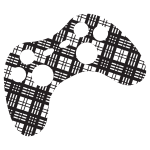 DiGRA-2011-FlanaganSBPDAD #case study #design #game studies #health
DiGRA-2011-FlanaganSBPDAD #case study #design #game studies #health- Preventing a POX Among the People? A Design Case Study of a Public Health Game (MF, MS, JB, SP, ZD, MA, AD).
 CHI-2011-Antin #wiki
CHI-2011-Antin #wiki- My kind of people?: perceptions about wikipedia contributors and their motivations (JA), pp. 3411–3420.
 CHI-2011-KaneWL #comprehension #gesture #performance
CHI-2011-KaneWL #comprehension #gesture #performance- Usable gestures for blind people: understanding preference and performance (SKK, JOW, REL), pp. 413–422.
 CHI-2011-KimL11a #experience #named #statistics
CHI-2011-KimL11a #experience #named #statistics- Handscope: enabling blind people to experience statistical graphics on websites through haptics (DjK, YKL), pp. 2039–2042.
 CHI-2011-KleekSsK #named
CHI-2011-KleekSsK #named- Finders/keepers: a longitudinal study of people managing information scraps in a micro-note tool (MVK, WS, MMCS, DRK), pp. 2907–2916.
 CHI-2011-KomanduriSKMBCCE #policy
CHI-2011-KomanduriSKMBCCE #policy- Of passwords and people: measuring the effect of password-composition policies (SK, RS, PGK, MLM, LB, NC, LFC, SE), pp. 2595–2604.
 CHI-2011-LelisH #how #online #rating
CHI-2011-LelisH #how #online #rating- Informing decisions: how people use online rating information to make choices (SL, AH), pp. 2285–2294.
 CHI-2011-LindqvistCWHZ #why
CHI-2011-LindqvistCWHZ #why- I’m the mayor of my house: examining why people use foursquare — a social-driven location sharing application (JL, JC, JW, JIH, JZ), pp. 2409–2418.
 CHI-2011-LinGTMA #identification #question
CHI-2011-LinGTMA #identification #question- Does domain highlighting help people identify phishing sites? (EL, SG, ET, DM, JA), pp. 2075–2084.
 CHI-2011-WeilenmannJ #comprehension #interactive #using
CHI-2011-WeilenmannJ #comprehension #interactive #using- Understanding people and animals: the use of a positioning system in ordinary human-canine interaction (AW, OJ), pp. 2631–2640.
 CHI-2011-WoelferH
CHI-2011-WoelferH - Homeless young people and living with personal digital artifacts (JPW, DGH), pp. 1697–1706.
 CHI-2011-WoelferIHFG #mobile #safety
CHI-2011-WoelferIHFG #mobile #safety- Improving the safety of homeless young people with mobile phones: values, form and function (JPW, AI, DGH, BF, BTG), pp. 1707–1716.
 DUXU-v1-2011-PrabhalaLG #question #what #word
DUXU-v1-2011-PrabhalaLG #question #what #word- Ethnography, Ethnography or Ethnography? What Happens When the Same Word Means Different Things to Different People? (SP, DL, SG), pp. 102–110.
 HCD-2011-HashizumeYK #experience #user interface
HCD-2011-HashizumeYK #experience #user interface- Real User Experience of ICT Devices among Elderly People (AH, TY, MK), pp. 227–234.
 HCD-2011-KandaK #communication #tool support
HCD-2011-KandaK #communication #tool support- Holistic Prosthetic Approaches to the Hearing Handicapped People: Communication Tools in Various Situations (KK, TK), pp. 313–320.
 HCD-2011-KimKK
HCD-2011-KimKK - The Impact of Robots Language Form on People’s Perception of Robots (YK, SSK, MK), pp. 253–261.
 HCI-ITE-2011-MiyabeY #question
HCI-ITE-2011-MiyabeY #question- Can Indicating Translation Accuracy Encourage People to Rectify Inaccurate Translations? (MM, TY), pp. 368–377.
 HCI-MIIE-2011-CostaFVCBH #detection #navigation #visual notation
HCI-MIIE-2011-CostaFVCBH #detection #navigation #visual notation- Landmarks Detection to Assist the Navigation of Visually Impaired People (PC, HF, VV, PC, JB, LJH), pp. 293–300.
 HCI-MIIE-2011-ZhanF #design #interactive #named
HCI-MIIE-2011-ZhanF #design #interactive #named- GoCoBa: Interactive Installation Design Applied on Combination of Context and People (JXZ, KKF), pp. 259–267.
 HCI-UA-2011-BeheshtiL #interface
HCI-UA-2011-BeheshtiL #interface- An Interface for Opportunistic Discovery of Information for Young People (JB, AL), pp. 541–548.
 HCI-UA-2011-VellaVR
HCI-UA-2011-VellaVR - Investigating Drag and Drop Techniques for Older People with Cognitive Impairment (FV, NV, PR), pp. 530–538.
 HIMI-v1-2011-AhmadWHK #web
HIMI-v1-2011-AhmadWHK #web- Different People Different Styles: Impact of Personality Style in Web Sites Credibility Judgement (RA, JW, KH, AK), pp. 521–527.
 HIMI-v2-2011-Otsuka #analysis #behaviour #comprehension #multimodal
HIMI-v2-2011-Otsuka #analysis #behaviour #comprehension #multimodal- Multimodal Conversation Scene Analysis for Understanding People’s Communicative Behaviors in Face-to-Face Meetings (KO), pp. 171–179.
 CIKM-2011-Karger #user interface
CIKM-2011-Karger #user interface- Creating user interfaces that entice people to manage better information (DRK), pp. 1–2.
 CIKM-2011-LiSL #network #social
CIKM-2011-LiSL #network #social- Context-based people search in labeled social networks (CTL, MKS, SDL), pp. 1607–1612.
 ECIR-2011-SerdyukovTVRW #automation #enterprise #profiling
ECIR-2011-SerdyukovTVRW #automation #enterprise #profiling- Automatic People Tagging for Expertise Profiling in the Enterprise (PS, MT, VV, MR, RWW), pp. 399–410.
 KDIR-2011-MantrachR #retrieval #social
KDIR-2011-MantrachR #retrieval #social- People Retrieval Leveraging Textual and Social Data (AM, JMR), pp. 333–341.
 RecSys-2011-BourkeMS #recommendation #social
RecSys-2011-BourkeMS #recommendation #social- Power to the people: exploring neighbourhood formations in social recommender system (SB, KM, BS), pp. 337–340.
 RecSys-2011-PizzatoS #collaboration #probability #recommendation
RecSys-2011-PizzatoS #collaboration #probability #recommendation- Stochastic matching and collaborative filtering to recommend people to people (LASP, CS), pp. 341–344.
 SIGIR-2011-CetintasRSF #identification #modelling #network #probability #social
SIGIR-2011-CetintasRSF #identification #modelling #network #probability #social- Identifying similar people in professional social networks with discriminative probabilistic models (SC, MR, LS, YF), pp. 1209–1210.
 SIGIR-2011-WeerkampBKMBR #analysis
SIGIR-2011-WeerkampBKMBR #analysis- People searching for people: analysis of a people search engine log (WW, RB, BK, EM, KB, MdR), pp. 45–54.
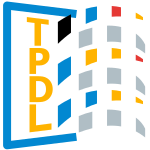 ECDL-2010-Dumais #comprehension #information management #named #web
ECDL-2010-Dumais #comprehension #information management #named #web- Keynote: The Web Changes Everything: Understanding and Supporting People in Dynamic Information Environments (STD), p. 1.
 ICPC-2010-Begel #comprehension
ICPC-2010-Begel #comprehension- From Program Comprehension to People Comprehension (AB), pp. 190–191.
 CHI-2010-MorrisTP #behaviour #network #overview #social #what #why
CHI-2010-MorrisTP #behaviour #network #overview #social #what #why- What do people ask their social networks, and why?: a survey study of status message q&a behavior (MRM, JT, KP), pp. 1739–1748.
 CHI-2010-TeevanDL #how #interactive #web
CHI-2010-TeevanDL #how #interactive #web- A longitudinal study of how highlighting web content change affects people’s web interactions (JT, STD, DJL), pp. 1353–1356.
 CHI-2010-WoelferH #case study #community #experience #information management
CHI-2010-WoelferH #case study #community #experience #information management- Homeless young people’s experiences with information systems: life and work in a community technology center (JPW, DGH), pp. 1291–1300.
 CSCW-2010-GuyJPRU #mining #similarity #social #social media
CSCW-2010-GuyJPRU #mining #similarity #social #social media- Same places, same things, same people?: mining user similarity on social media (IG, MJ, AP, IR, EU), pp. 41–50.
 CSCW-2010-LeeKF #how #question
CSCW-2010-LeeKF #how #question- Receptionist or information kiosk: how do people talk with a robot? (MKL, SBK, JF), pp. 31–40.
 ICEIS-HCI-2010-AstolfiMSA #difference #enterprise #problem #using
ICEIS-HCI-2010-AstolfiMSA #difference #enterprise #problem #using- Using Cultural Differences to Join People with Common Interests or Problems in Enterprise Environment (GA, VMAdM, MARS, JCA), pp. 192–197.
 ICPR-2010-AranG #detection
ICPR-2010-AranG #detection- Fusing Audio-Visual Nonverbal Cues to Detect Dominant People in Group Conversations (OA, DGP), pp. 3687–3690.
 ICPR-2010-BouchrikaCNMT #detection #using
ICPR-2010-BouchrikaCNMT #detection #using- Using Gait Features for Improving Walking People Detection (IB, JNC, MSN, RM, GT), pp. 3097–3100.
 ICPR-2010-CaiTP
ICPR-2010-CaiTP - Matching Groups of People by Covariance Descriptor (YC, VT, MP), pp. 2744–2747.
 ICPR-2010-CalderaraPC #similarity #statistics #using
ICPR-2010-CalderaraPC #similarity #statistics #using- Alignment-Based Similarity of People Trajectories Using Semi-directional Statistics (SC, AP, RC), pp. 4275–4278.
 ICPR-2010-ConteFPTV #detection
ICPR-2010-ConteFPTV #detection- Counting Moving People in Videos by Salient Points Detection (DC, PF, GP, FT, MV), pp. 1743–1746.
 ICPR-2010-VanacloigOGV #image #integration
ICPR-2010-VanacloigOGV #image #integration- Locating People in Images by Optimal Cue Integration (VLAV, JARO, GAG, JMVG), pp. 1804–1807.
 ICPR-2010-ZengM #detection #multi #robust
ICPR-2010-ZengM #detection #multi #robust- Robust Head-Shoulder Detection by PCA-Based Multilevel HOG-LBP Detector for People Counting (CZ, HM), pp. 2069–2072.
 ICPR-2010-ZenLMR #multi
ICPR-2010-ZenLMR #multi- Tracking Multiple People with Illumination Maps (GZ, OL, SM, ER), pp. 3484–3487.
 SEKE-2010-AlhassanCB #analysis #fault #network #social
SEKE-2010-AlhassanCB #analysis #fault #network #social- Do More People Make the Code More Defect Prone?: Social Network Analysis in OSS Projects (SA, BC, ABB), pp. 93–98.
 SEKE-2010-Cheng #collaboration #integration
SEKE-2010-Cheng #collaboration #integration- Building A Smarter Planet With University Collaboration: Empowering People Through Information Integration (JMC), p. 2.
 SIGIR-2010-AhmedN #multi #question
SIGIR-2010-AhmedN #multi #question- multi Searcher: can we support people to get information from text they can’t read or understand? (FA, AN), pp. 837–838.
 SIGIR-2010-GuyZRCU #recommendation #social #social media
SIGIR-2010-GuyZRCU #recommendation #social #social media- Social media recommendation based on people and tags (IG, NZ, IR, DC, EU), pp. 194–201.
 SIGIR-2010-KumarU #multi
SIGIR-2010-KumarU #multi- Multilingual people search (SK, RU), p. 708.
 SIGIR-2010-Weerkamp #social #social media
SIGIR-2010-Weerkamp #social #social media- Finding people and their utterances in social media (WW), p. 918.
 ICSE-2010-SutcliffeT #problem #requirements
ICSE-2010-SutcliffeT #problem #requirements- Analysing “people” problems in requirements engineering (AGS, ST), pp. 469–470.
 SAC-2010-YasarMPLCB #information management #interactive #network #scalability #social
SAC-2010-YasarMPLCB #information management #interactive #network #scalability #social- Where people and cars meet: social interactions to improve information sharing in large scale vehicular networks (AUHY, NM, DP, KL, KC, YB), pp. 1188–1194.
 ECDL-2009-ChenRB #how #mining #online #visualisation #web
ECDL-2009-ChenRB #how #mining #online #visualisation #web- How People Read Books Online: Mining and Visualizing Web Logs for Use Information (RC, AR, BBB), pp. 364–369.
 VS-Games-2009-KimKYK #design #game studies #user interface
VS-Games-2009-KimKYK #design #game studies #user interface- A Sensory Gate-Ball Game for the Aged People and its User Interface Design (JAK, KKK, HRY, DK), pp. 111–116.
 CHI-2009-ChenGDMG #network #recommendation #social
CHI-2009-ChenGDMG #network #recommendation #social- Make new friends, but keep the old: recommending people on social networking sites (JC, WG, CD, MJM, IG), pp. 201–210.
 CHI-2009-HaradaWMBL #learning
CHI-2009-HaradaWMBL #learning- Longitudinal study of people learning to use continuous voice-based cursor control (SH, JOW, JM, JAB, JAL), pp. 347–356.
 CHI-2009-NylanderLB #internet #why
CHI-2009-NylanderLB #internet #why- At home and with computer access: why and where people use cell phones to access the internet (SN, TL, AB), pp. 1639–1642.
 CHI-2009-Zimmerman #design
CHI-2009-Zimmerman #design- Designing for the self: making products that help people become the person they desire to be (JZ), pp. 395–404.
 HCD-2009-LiuL #adaptation #mobile
HCD-2009-LiuL #adaptation #mobile- User Value Based Product Adaptation: A Case of Mobile Products for Chinese Urban Elderly People (JL, XL), pp. 492–500.
 HCD-2009-Nishiguchi #user interface
HCD-2009-Nishiguchi #user interface- Support Method for Improving the Ability of People with Cerebral Palsy to Efficiently Point a Mouse at Objects on a GUI Screen (HN), pp. 531–537.
 HCI-NT-2009-RaoCJB #concurrent #exclamation #how
HCI-NT-2009-RaoCJB #concurrent #exclamation #how- “You’ve Got IMs!” How People Manage Concurrent Instant Messages (SR, JC, RJ, RB), pp. 500–509.
 HIMI-DIE-2009-OkaOMS #case study #identification
HIMI-DIE-2009-OkaOMS #case study #identification- A Study on Color Conversion for Color Deficient People to Identify Color (MO, NO, HM, AS), pp. 594–600.
 HIMI-II-2009-IzumiyaOT #design #evaluation
HIMI-II-2009-IzumiyaOT #design #evaluation- The Evaluation of Pharmaceutical Package Designs for the Elderly People (AI, MO, FT), pp. 522–528.
 IDGD-2009-Gould09a #question #usability
IDGD-2009-Gould09a #question #usability- Intercultural Usability Surveys: Do People Always Tell “The Truth”? (EWG), pp. 254–258.
 IDGD-2009-MiyabeY #communication #design #multi
IDGD-2009-MiyabeY #communication #design #multi- Design of Face-to-Face Multilingual Communication Environment for Illiterate People (MM, TY), pp. 283–292.
 OCSC-2009-Bansal
OCSC-2009-Bansal - City Ragas: Building an Intercultural Dialogue between People (LB), pp. 663–672.
 OCSC-2009-BrandtzaegH #network #social #why
OCSC-2009-BrandtzaegH #network #social #why- Why People Use Social Networking Sites (PBB, JH), pp. 143–152.
 CIKM-2009-NusselderPSM #information management #web
CIKM-2009-NusselderPSM #information management #web- Helping people to choose for whom to vote. a web information system for the 2009 European elections (AN, HP, AS, MM), pp. 2095–2096.
 OOPSLA-2009-Mullen #design
OOPSLA-2009-Mullen #design- Writing code for other people: cognitive psychology and the fundamentals of good software design principles (TM), pp. 481–492.
 SAC-2009-NetoFP #named #using
SAC-2009-NetoFP #named #using- MATRACA: a tool to provide support for people with impaired vision when using the computer for simple tasks (FGdON, JMF, RRGP), pp. 158–159.
 SAC-2009-RamanathanRG #delivery #framework #process #trade-off #using
SAC-2009-RamanathanRG #delivery #framework #process #trade-off #using- The people, the process or the technology?: Using the ACE framework to make tradeoffs in service delivery improvement (JR, RR, RG), pp. 259–264.
 JCDL-2008-CunninghamN #how
JCDL-2008-CunninghamN #how- How people find videos (SJC, DMN), pp. 201–210.
 CSEET-2008-Taran #education #interactive
CSEET-2008-Taran #education #interactive- Managing Technical People: Creatively Teaching the Skills of Human Interaction in Today’s Diverse Classrooms (GT), pp. 93–100.
 ITiCSE-2008-NorteL #game studies
ITiCSE-2008-NorteL #game studies- A sudoku game for people with motor impairments (SN, FGL), p. 319.
 CHI-2008-HarboeMBTMR #experience #social
CHI-2008-HarboeMBTMR #experience #social- Ambient social tv: drawing people into a shared experience (GH, CJM, FB, JT, NM, GR), pp. 1–10.
 CHI-2008-Joinson #facebook #using
CHI-2008-Joinson #facebook #using- Looking at, looking up or keeping up with people?: motives and use of facebook (ANJ), pp. 1027–1036.
 CHI-2008-PlimmerCBB #collaboration #multimodal
CHI-2008-PlimmerCBB #collaboration #multimodal- Multimodal collaborative handwriting training for visually-impaired people (BP, AC, SAB, RB), pp. 393–402.
 CAiSE-2008-RussellA #resource management
CAiSE-2008-RussellA #resource management- Work Distribution and Resource Management in BPEL4People: Capabilities and Opportunities (NR, WMPvdA), pp. 94–108.
 CIKM-2008-LinSK #concept #network #process #social #summary
CIKM-2008-LinSK #concept #network #process #social #summary- Summarization of social activity over time: people, actions and concepts in dynamic networks (YRL, HS, AK), pp. 1379–1380.
 ECIR-2008-BalogR #documentation
ECIR-2008-BalogR #documentation- Associating People and Documents (KB, MdR), pp. 296–308.
 ICPR-2008-AraiMKH #geometry #sequence #video
ICPR-2008-AraiMKH #geometry #sequence #video- Estimating the number of people in a video sequence via geometrical model (HA, IM, HK, MH), pp. 1–4.
 ICPR-2008-TanakaG #smarttech
ICPR-2008-TanakaG #smarttech- Text-tracking wearable camera system for visually-impaired people (MT, HG), pp. 1–4.
 ICPR-2008-VanacloigOGG #constraints #realtime #recognition
ICPR-2008-VanacloigOGG #constraints #realtime #recognition- People and luggage recognition in airport surveillance under real-time constraints (VLAV, JARO, GAG, JMVG), pp. 1–4.
 RecSys-2008-AgrahriMR #question
RecSys-2008-AgrahriMR #question- Can people collaborate to improve the relevance of search results? (AKA, DATM, JR), pp. 283–286.
 SIGIR-2008-KalashnikovNM #approach #quality #towards #web
SIGIR-2008-KalashnikovNM #approach #quality #towards #web- Towards breaking the quality curse.: a web-querying approach to web people search (DVK, RNT, SM), pp. 27–34.
 PDP-2008-HolmesVD #named
PDP-2008-HolmesVD #named- VieBOP: Extending BPEL Engines with BPEL4People (TH, MV, SD), pp. 547–555.
 DRR-2007-Fruchterman #documentation #recognition
DRR-2007-Fruchterman #documentation #recognition- Document recognition serving people with disabilities (JRF).
 CSEET-2007-TaranR #case study #comparative #education #perspective #process #re-engineering
CSEET-2007-TaranR #case study #comparative #education #perspective #process #re-engineering- Software Engineering Education in Russia: A Comparative Study of People, Process and Technology a Four Year Perspective (GT, MRL), pp. 19–28.
 ITiCSE-2007-NorteL
ITiCSE-2007-NorteL - A virtual logo keyboard for people with motor disabilities (SN, FGL), pp. 111–115.
 DiGRA-2007-KortIG #experience #framework #game studies #research
DiGRA-2007-KortIG #experience #framework #game studies #research- People, Places, and Play: A research framework for digital game experience in a socio-spatial context (YAWdK, WAI, BJG).
 CHI-2007-KalnikaiteW #memory management #why
CHI-2007-KalnikaiteW #memory management #why- Software or wetware?: discovering when and why people use digital prosthetic memory (VK, SW), pp. 71–80.
 CHI-2007-KumaraguruRACHN #design #email #embedded #evaluation
CHI-2007-KumaraguruRACHN #design #email #embedded #evaluation- Protecting people from phishing: the design and evaluation of an embedded training email system (PK, YR, AA, LFC, JIH, EN), pp. 905–914.
 CHI-2007-TanYM #adaptation #approach #visual notation #web
CHI-2007-TanYM #adaptation #approach #visual notation #web- An adaptive & adaptable approach to enhance web graphics accessibility for visually impaired people (CCT, WY, GM), pp. 1539–1542.
 HCI-AS-2007-HuangRS #overview #security
HCI-AS-2007-HuangRS #overview #security- A Survey of Factors Influencing People’s Perception of Information Security (DLH, PLPR, GS), pp. 906–915.
 HCI-MIE-2007-HongSL #gesture #interactive #multi #recognition
HCI-MIE-2007-HongSL #gesture #interactive #multi #recognition- Multiple People Gesture Recognition for Human-Robot Interaction (SJH, NAS, CWL), pp. 625–633.
 HCI-MIE-2007-JuSK #game studies #quote #using
HCI-MIE-2007-JuSK #game studies #quote #using- “Shooting a Bird”: Game System Using Facial Feature for the Handicapped People (JJ, YS, EYK), pp. 642–648.
 HCI-MIE-2007-SetiawanHL #interactive #multi #using
HCI-MIE-2007-SetiawanHL #interactive #multi #using- Multiple People Labeling and Tracking Using Stereo for Human Computer Interaction (NAS, SJH, CWL), pp. 738–746.
 HIMI-IIE-2007-Bradley #collaboration
HIMI-IIE-2007-Bradley #collaboration- Collaboration Between People for Sustainability in the ICT Society (GB), pp. 703–712.
 HIMI-IIE-2007-KaminoyamaMHSKA #navigation #using
HIMI-IIE-2007-KaminoyamaMHSKA #navigation #using- Walk Navigation System Using Photographs for People with Dementia (HK, TM, FH, KS, NK, SA), pp. 1039–1049.
 HIMI-IIE-2007-MitsumotoW #email #visual notation
HIMI-IIE-2007-MitsumotoW #email #visual notation- Exchanging Graphical Emails Among Elderly People and Kindergarten Children (MM, SHW), pp. 74–83.
 ECIR-2007-BrunnertAR #enterprise #retrieval #using #visualisation
ECIR-2007-BrunnertAR #enterprise #retrieval #using #visualisation- Enterprise People and Skill Discovery Using Tolerant Retrieval and Visualization (JB, OA, DR), pp. 674–677.
 SIGIR-2007-Balog #enterprise
SIGIR-2007-Balog #enterprise- People search in the enterprise (KB), p. 916.
 CASE-2007-ArsandVH #health #mobile #self #usability
CASE-2007-ArsandVH #health #mobile #self #usability- Usability of a Mobile Self-Help Tool for People with Diabetes: the Easy Health Diary (EÅ, RV, GH), pp. 863–868.
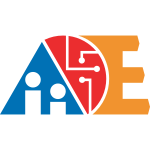 AIIDE-2006-McDonaldLFH #abstraction #framework
AIIDE-2006-McDonaldLFH #abstraction #framework- An Abstraction Framework for Cooperation Among Agents and People in a Virtual World (DDM0, AL, WF, TSH), pp. 54–59.
 CHI-2006-Boyd-GraberNMKLMTK #design
CHI-2006-Boyd-GraberNMKLMTK #design- Participatory design with proxies: developing a desktop-PDA system to support people with aphasia (JLBG, SSN, KM, KCK, JYL, LWM, MT, MMK), pp. 151–160.
 CHI-2006-PetrieHKP #usability
CHI-2006-PetrieHKP #usability- Remote usability evaluations With disabled people (HP, FH, NK, PP), pp. 1133–1141.
 CHI-2006-SiekCR #how #learning
CHI-2006-SiekCR #how #learning- Pride and prejudice: learning how chronically ill people think about food (KAS, KHC, YR), pp. 947–950.
 CHI-2006-TangKFH #approach #privacy
CHI-2006-TangKFH #approach #privacy- Putting people in their place: an anonymous and privacy-sensitive approach to collecting sensed data in location-based applications (KPT, PK, JF, JIH), pp. 93–102.
 CHI-2006-WobbrockM
CHI-2006-WobbrockM - Trackball text entry for people with motor impairments (JOW, BAM), pp. 479–488.
 ICPR-v1-2006-HarasseBD #detection
ICPR-v1-2006-HarasseBD #detection- Human model for people detection in dynamic scenes (SH, LB, MD), pp. 335–354.
 ICPR-v2-2006-IncertisGC #gesture #recognition
ICPR-v2-2006-IncertisGC #gesture #recognition- Hand Gesture Recognition for Deaf People Interfacing (IGI, JGGB, EZC), pp. 100–103.
 ICPR-v4-2006-CuiZZS #multi #robust #using
ICPR-v4-2006-CuiZZS #multi #robust #using- Robust Tracking of Multiple People in Crowds Using Laser Range Scanners (JC, HZ, HZ, RS), pp. 857–860.
 HT-2005-SalampasisKM #semantics
HT-2005-SalampasisKM #semantics- Semantically enhanced browsing for blind people in the WWW (MS, CK, AM), pp. 32–34.
 DiGRA-2005-Pelletier #design #game studies
DiGRA-2005-Pelletier #design #game studies- The things we learned on Liberty Island: designing games to help people become competent game players (CP).
 DiGRA-2005-Schut #game studies #how
DiGRA-2005-Schut #game studies #how- Mechanized Humanity: how Digital Games Tend to Present People (KS).
 CHI-2005-ConsolvoSMLTP #social #what #why
CHI-2005-ConsolvoSMLTP #social #what #why- Location disclosure to social relations: why, when, & what people want to share (SC, IES, TM, AL, JT, PP), pp. 81–90.
 CIKM-2005-KumamotoT #mining #web
CIKM-2005-KumamotoT #mining #web- Web opinion poll: extracting people’s view by impression mining from the web (TK, KT), pp. 265–266.
 LSO-2005-BuchH #information management #tool support
LSO-2005-BuchH #information management #tool support- Substance, People, and Tools — Knowledge Management at sd&m (AB, BH), pp. 115–118.
 SIGIR-2005-ArtilesGV
SIGIR-2005-ArtilesGV - A testbed for people searching strategies in the WWW (JA, JG, FV), pp. 569–570.
 JCDL-2004-CunninghamBM #analysis #how #image #query #visual notation
JCDL-2004-CunninghamBM #analysis #how #image #query #visual notation- How people describe their image information needs: a grounded theory analysis of visual arts queries (SJC, DB, MM), pp. 47–48.
 JCDL-2004-HaradaSK #web
JCDL-2004-HaradaSK #web- Finding authoritative people from the web (MH, SyS, KK), pp. 306–313.
 JCDL-2004-YangH #video
JCDL-2004-YangH #video- Video grammar for locating named people (JY, AGH), pp. 216–217.
 CHI-2004-MoffattMPK #design #image
CHI-2004-MoffattMPK #design #image- The participatory design of a sound and image enhanced daily planner for people with aphasia (KM, JM, BP, MMK), pp. 407–414.
 CSCW-2004-NardiSG #process #question #social
CSCW-2004-NardiSG #process #question #social- Blogging as social activity, or, would you let 900 million people read your diary? (BAN, DJS, MG), pp. 222–231.
 CSCW-2004-TseHSG #clustering #dependence #how
CSCW-2004-TseHSG #clustering #dependence #how- Avoiding interference: how people use spatial separation and partitioning in SDG workspaces (ET, JH, SDS, SG), pp. 252–261.
 ICEIS-v1-2004-Coplien
ICEIS-v1-2004-Coplien - Organizational Patterns: Beyond Technology to People (JC), p. XV.
 ICEIS-v5-2004-KotzeEAE #interactive
ICEIS-v5-2004-KotzeEAE #interactive- Accessible Computer Interaction for People with Disabilities: The Case of Quadriplegics (PK, MME, AAO, JHPE), pp. 97–106.
 ICPR-v1-2004-CucchiaraGTV #probability
ICPR-v1-2004-CucchiaraGTV #probability- Probabilistic People Tracking for Occlusion Handling (RC, CG, GT, RV), pp. 132–135.
 ICPR-v1-2004-IwatsukaYK #development #recognition
ICPR-v1-2004-IwatsukaYK #development #recognition- Development of a Guide Dog System for the Blind People with Character Recognition Ability (KI, KY, KK), pp. 453–456.
 ICPR-v2-2004-HuHT
ICPR-v2-2004-HuHT - Tracking People through Occlusions (MH, WH, TT), pp. 724–727.
 ICPR-v4-2004-DavisS #detection #robust
ICPR-v4-2004-DavisS #detection #robust- Robust Detection of People in Thermal Imagery (JWD, VS), pp. 713–716.
 ICPR-v4-2004-YangSW #multi
ICPR-v4-2004-YangSW #multi- People Tracking by Integrating Multiple Features (MTY, YCS, SCW), pp. 929–932.
 SIGIR-2004-Leuski #email
SIGIR-2004-Leuski #email- Email is a stage: discovering people roles from email archives (AL), pp. 502–503.
 CHI-2003-RiegelsbergerSM #e-commerce #trust
CHI-2003-RiegelsbergerSM #e-commerce #trust- Shiny happy people building trust?: photos on e-commerce websites and consumer trust (JR, MAS, JDM), pp. 121–128.
 CHI-2003-RoddenW #how #question
CHI-2003-RoddenW #how #question- How do people manage their digital photographs? (KR, KRW), pp. 409–416.
 CHI-2003-ShechtmanH #difference #how
CHI-2003-ShechtmanH #difference #how- Media inequality in conversation: how people behave differently when interacting with computers and people (NS, LMH), pp. 281–288.
 ICEIS-v2-2003-Debenham #constraints #process
ICEIS-v2-2003-Debenham #constraints #process- Agents for High-Level Process Management: The Right Activities, People and Resources to Satisfy Process Constraints (JKD), pp. 434–437.
 ICEIS-v3-2003-LopezMFL #adaptation #generative #towards #user interface
ICEIS-v3-2003-LopezMFL #adaptation #generative #towards #user interface- Towards Adaptive User Interface Generation: One Step Closer to People (VLJ, FMS, AFC, MDL), pp. 97–103.
 ICPR-v1-2002-KangKB #multi #realtime #using
ICPR-v1-2002-KangKB #multi #realtime #using- Real-Time Multiple People Tracking Using Competitive Condensation (HK, DK, SYB), pp. 413–416.
 ICPR-v1-2002-NguyenVWB #behaviour #monitoring #multi #using
ICPR-v1-2002-NguyenVWB #behaviour #monitoring #multi #using- Hierarchical Monitoring of People’s Behaviors in Complex Environments Using Multiple Cameras (NTN, SV, GAWW, HHB), pp. 13–16.
 ICPR-v2-2002-PiauR
ICPR-v2-2002-PiauR - Tracking People (NKP, SR), pp. 370–373.
 ICPR-v2-2002-VisserSL #detection #retrieval #semantics #video
ICPR-v2-2002-VisserSL #detection #retrieval #semantics #video- Detecting Automobiles and People for Semantic Video Retrieval (RV, NS, MSL), pp. 733–736.
 ICPR-v3-2002-Ishii #bound #design
ICPR-v3-2002-Ishii #bound #design- Tangible Bits: Designing the Boundary between People, Bits, and Atoms (HI), p. 277.
 ICPR-v3-2002-SpragueL #detection #image
ICPR-v3-2002-SpragueL #detection #image- Clothed People Detection in Still Images (NS, JL), pp. 585–589.
 JCDL-2001-WittenBB #library
JCDL-2001-WittenBB #library- Power to the people: end-user building of digital library collections (IHW, DB, SJB), pp. 94–103.
 ECOOP-2001-Cockburn
ECOOP-2001-Cockburn - People and the Limits of Methodology (AC), p. 302.
 ICPR-v1-2000-SherrahG #multi #named #process #recognition
ICPR-v1-2000-SherrahG #multi #named #process #recognition- VIGOUR: A System for Tracking and Recognition of Multiple People and their Activities (JS, SG), pp. 1179–1182.
 ICPR-v3-2000-VaronaGRV #named #probability
ICPR-v3-2000-VaronaGRV #named #probability- iTrack: Image-Based Probabilistic Tracking of People (XV, JG, FXR, JJV), pp. 7122–7125.
 ICPR-v4-2000-AlbiolNM #realtime #tool support #using
ICPR-v4-2000-AlbiolNM #realtime #tool support #using- Real-Time High Density People Counter Using Morphological Tools (AA, VN, IM), pp. 4652–4655.
 ICPR-v4-2000-BergasaMGBB #generative
ICPR-v4-2000-BergasaMGBB #generative- Commands Generation by Face Movements Applied to the Guidance of a Wheelchair for Handicapped People (LMB, MM, AGV, RB, LB), pp. 4660–4663.
 ICPR-v4-2000-HaritaogluHD00a #multi
ICPR-v4-2000-HaritaogluHD00a #multi- An Appearance-Based Body Model for Multiple People Tracking (IH, DH, LSD), pp. 4184–4187.
 ICPR-v4-2000-JabriDWR #adaptation #detection #image #using #video
ICPR-v4-2000-JabriDWR #adaptation #detection #image #using #video- Detection and Location of People in Video Images Using Adaptive Fusion of Color and Edge Information (SJ, ZD, HW, AR), pp. 4627–4631.
 ICPR-v4-2000-PujolLVV
ICPR-v4-2000-PujolLVV - Locating People in Indoor Scenes for Real Applications (AP, FL, XV, JJV), pp. 4632–4635.
 ICPR-v4-2000-RohKL #modelling #multi #using
ICPR-v4-2000-RohKL #modelling #multi #using- Multiple People Tracking Using an Appearance Model Based on Temporal Color (HKR, SK, SWL), pp. 4643–4646.
 SIGIR-2000-AslandoganY #image #multi #retrieval #web
SIGIR-2000-AslandoganY #image #multi #retrieval #web- Multiple evidence combination in image retrieval: diogenes searches for people on the Web (YAA, CTY), pp. 88–95.
 CHI-1999-HornofK #how #modelling
CHI-1999-HornofK #how #modelling- Cognitive Modeling Demonstrates How People Use Anticipated Location Knowledge of Menu Items (AJH, DEK), pp. 410–417.
 CHI-1999-KristoffersenL #empirical #how #interactive #modelling
CHI-1999-KristoffersenL #empirical #how #interactive #modelling- An Empirical Study of How People Establish Interaction: Implications for CSCW Session Management Models (SK, FL), pp. 1–8.
 HCI-CCAD-1999-BoschianLDMJ #artificial reality #how #question
HCI-CCAD-1999-BoschianLDMJ #artificial reality #how #question- How can people with disabilities navigate in virtual reality with an input device they can use? (KB, AL, RCD, UM, GJ), pp. 1111–1115.
 HCI-CCAD-1999-BrollGMPP
HCI-CCAD-1999-BrollGMPP - Place people in context — the awareness forum (WB, WG, EM, UPB, WP), pp. 462–466.
 HCI-CCAD-1999-BrownS #development #education #learning
HCI-CCAD-1999-BrownS #development #education #learning- An illustrated methodology for the development of virtual learning environments for use by people in special needs education (DJB, DSS), pp. 1105–1110.
 HCI-CCAD-1999-Burmester #design #requirements #user interface
HCI-CCAD-1999-Burmester #design #requirements #user interface- Consumer electronics user interfaces for all. Design on the basis of the special requirements of elderly people (MB), pp. 942–946.
 HCI-CCAD-1999-KleinS #independence #research
HCI-CCAD-1999-KleinS #independence #research- Independent living for elder and handicapped people — results of a research project (BK, BS), pp. 957–960.
 HCI-CCAD-1999-MasoodianC #design
HCI-CCAD-1999-MasoodianC #design- User-centred design of a virtual meeting environment for ordinary people (MM, BC), pp. 528–532.
 HCI-CCAD-1999-Sandhu #human-computer #information management
HCI-CCAD-1999-Sandhu #human-computer #information management- HCI public service information systems focused on the needs of disabled and older people (JSS), pp. 927–931.
 ACIR-1999-Rodden #how #question
ACIR-1999-Rodden #how #question- How Do People Organise Their Photographs? (KR).
 CHI-1998-SchianoW
CHI-1998-SchianoW - The First Noble Truth of CyberSpace: People are People (even when they MOO) (DJS, SW), pp. 352–359.
 CHI-1997-IshiiU #interface #towards
CHI-1997-IshiiU #interface #towards- Tangible Bits: Towards Seamless Interfaces between People, Bits and Atoms (HI, BU), pp. 234–241.
 HCI-CC-1997-AkoumianakisSS #constraints #design #elicitation #interface
HCI-CC-1997-AkoumianakisSS #constraints #design #elicitation #interface- Interface Design for Disabled People: Eliciting User-Centred Design Constraints (DA, CS, GS), pp. 437–440.
 HCI-CC-1997-PaneroLN #how
HCI-CC-1997-PaneroLN #how- The Computer Use Scale: Four Dimensions of How People Use Computer (JCP, DML, HAN), pp. 821–824.
 HCI-CC-1997-StahreJA #industrial #optimisation
HCI-CC-1997-StahreJA #industrial #optimisation- Joint Optimization of People and Technology-An Example from the Car Industry (JS, AJ, SA), pp. 265–268.
 HCI-CC-1997-StrohmU #analysis #concept
HCI-CC-1997-StrohmU #analysis #concept- Sociotechnical Analysis According to the Concept of People, Technology, Organization (OS, EU), pp. 241–244.
 HCI-SEC-1997-Moustakis #human-computer #machine learning #question
HCI-SEC-1997-Moustakis #human-computer #machine learning #question- Do People in HCI Use Machine Learning? (VM), pp. 95–98.
 HCI-SEC-1997-Okamoto #information management #interface #theory and practice #towards
HCI-SEC-1997-Okamoto #information management #interface #theory and practice #towards- Toward Rehabilitation Cognitive Engineering-Gap Between Theory and Practice in the Human Interface of Information Processing Devices for People with Disabilities (AO), pp. 551–554.
 ICSE-1997-Weiser #matter #re-engineering
ICSE-1997-Weiser #matter #re-engineering- Software Engineering That Matters to People (MW), p. 538.
 CSEE-1996-Baron
CSEE-1996-Baron - The People Side of Software: A Lesson Plan for Establishing a Successful Training Program (JB), pp. 184–198.
 ICPR-1996-Segen #realtime
ICPR-1996-Segen #realtime- A camera-based system for tracking people in real time (JS), pp. 63–67.
 CHI-1995-KlineG #user interface
CHI-1995-KlineG #user interface- Improving GUI Accessibility for People with Low Vision (RLK, EPG), pp. 114–121.
 RE-1995-MaidenMS #approach #how #requirements #reuse
RE-1995-MaidenMS #approach #how #requirements #reuse- How People Categorise Requirements for Reuse: a Natural Approach (NAMM, PM, AGS), pp. 148–157.
 SAC-1994-ConradJ #realtime
SAC-1994-ConradJ #realtime- A real-time people counter (GC, RJ), pp. 20–24.
 HCI-ACS-1993-Harkins #communication
HCI-ACS-1993-Harkins #communication- Ergonomic Considerations for Communication Technologies for Deaf and Hard of Hearing People (JEH), pp. 504–509.
 HCI-ACS-1993-Hjelmquist #communication #using
HCI-ACS-1993-Hjelmquist #communication #using- Communication Between People Using a Computer-Mediated Communication System (EH), pp. 955–960.
 HCI-SHI-1993-Gunderson #design #overview
HCI-SHI-1993-Gunderson #design #overview- Intelligent Task Based Model for the Design of Screen Review Systems for People with Blindness (JPG), pp. 736–741.
 HCI-SHI-1993-KurokawaMW #bidirectional #communication
HCI-SHI-1993-KurokawaMW #bidirectional #communication- Bidirectional Translation between Sign Language and Japanese for Communication with Deaf-Mute People (TK, TM, SW), pp. 1109–1114.
 HCI-SHI-1993-MartialD #design #named #user interface #visual notation
HCI-SHI-1993-MartialD #design #named #user interface #visual notation- Audicon: Easy Access to Graphical User Interfaces for Blind Persons — Designing for and with People (OM, AD), pp. 808–813.
 INTERCHI-1993-AlmTEN
INTERCHI-1993-AlmTEN - Computer aided conversation for severely physically impaired non-speaking people (NA, JT, LE, AFN), pp. 236–241.
 CAiSE-1990-Mayhew #development #prototype
CAiSE-1990-Mayhew #development #prototype- Software Prototyping: Implications for the People Involved in Systems Development (PJM), pp. 290–305.
 CSCW-1986-Neches #tool support
CSCW-1986-Neches #tool support- Tools help people co-operate only to the extent that they help them share goals and terminology (RN), pp. 192–201.
 SIGIR-1985-CanasSC #concept #documentation #how
SIGIR-1985-CanasSC #concept #documentation #how- A Conceptual Model aod Experiments on How People Classify and Retrieve Documents (AJC, FRS, DWC), pp. 282–287.
 CHI-PLAY-2019-WohnJESSD #comprehension #question #why
CHI-PLAY-2019-WohnJESSD #comprehension #question #why CIKM-2018-YamamotoYF #behaviour #towards #web
CIKM-2018-YamamotoYF #behaviour #towards #web ICPR-2018-ChengWLY #locality #visual notation
ICPR-2018-ChengWLY #locality #visual notation FDG-2017-Compton #game studies #generative
FDG-2017-Compton #game studies #generative FDG-2017-FieldsKGFW
FDG-2017-FieldsKGFW  VS-Games-2017-DCruzPHSVP #3d #game studies #novel
VS-Games-2017-DCruzPHSVP #3d #game studies #novel CASE-2017-FranckAXG #approach #problem
CASE-2017-FranckAXG #approach #problem EDM-2016-Kay #learning
EDM-2016-Kay #learning EDM-2016-Kay16a #learning
EDM-2016-Kay16a #learning MSR-2016-YangKYI #code review #dataset #mining #overview #process #repository
MSR-2016-YangKYI #code review #dataset #mining #overview #process #repository CHI-PLAY-2016-BonsignoreHKVF #game studies #learning
CHI-PLAY-2016-BonsignoreHKVF #game studies #learning CHI-PLAY-2016-TyackW0 #game studies #what
CHI-PLAY-2016-TyackW0 #game studies #what VS-Games-2016-AyedGJAVM #game studies #using
VS-Games-2016-AyedGJAVM #game studies #using VS-Games-2016-Piedra-Fernandez #artificial reality #communication #using
VS-Games-2016-Piedra-Fernandez #artificial reality #communication #using ICPR-2016-OnishiN #interactive #twitter
ICPR-2016-OnishiN #interactive #twitter KDD-2016-Hellerstein
KDD-2016-Hellerstein  ICSME-2015-KononenkoBGCG #code review #matter #overview #quality #question
ICSME-2015-KononenkoBGCG #code review #matter #overview #quality #question CHI-PLAY-2015-HarpsteadZNGCSG #game studies #what
CHI-PLAY-2015-HarpsteadZNGCSG #game studies #what FDG-2015-RyanKHMW #game studies
FDG-2015-RyanKHMW #game studies CHI-2015-AhmedHCCK #behaviour #privacy #visual notation
CHI-2015-AhmedHCCK #behaviour #privacy #visual notation CHI-2015-BachourWFHRM #game studies #human-computer #online #standard
CHI-2015-BachourWFHRM #game studies #human-computer #online #standard CHI-2015-FlatlaATKS #identification #named
CHI-2015-FlatlaATKS #identification #named CHI-2015-KatanGF #development #interactive #interface #machine learning #using
CHI-2015-KatanGF #development #interactive #interface #machine learning #using CHI-2015-LesselAK #analysis
CHI-2015-LesselAK #analysis CHI-2015-McNaneyBHSJWGBR #design #game studies
CHI-2015-McNaneyBHSJWGBR #design #game studies CHI-2015-McNaneyPVBZO #named #speech
CHI-2015-McNaneyPVBZO #named #speech CHI-2015-StrohmayerCB #learning
CHI-2015-StrohmayerCB #learning CHI-2015-WaddingtonLGHH #design #game studies #video
CHI-2015-WaddingtonLGHH #design #game studies #video CHI-2015-WarshawMWKBS #algorithm #comprehension
CHI-2015-WarshawMWKBS #algorithm #comprehension CSCW-2015-SharmaC #modelling #resource management
CSCW-2015-SharmaC #modelling #resource management CSCW-2015-ZyskowskiMBGK #challenge #comprehension
CSCW-2015-ZyskowskiMBGK #challenge #comprehension DHM-HM-2015-ShodaYSS #analysis #behaviour #how
DHM-HM-2015-ShodaYSS #analysis #behaviour #how DUXU-DD-2015-GuoSYL
DUXU-DD-2015-GuoSYL  HCI-UC-2015-HarringtonFBPS
HCI-UC-2015-HarringtonFBPS  SIGIR-2015-Belkin
SIGIR-2015-Belkin  GTTSE-2015-SingerSFZG #development
GTTSE-2015-SingerSFZG #development CASE-2015-SolisTR #multi #towards
CASE-2015-SolisTR #multi #towards JCDL-2014-FrommholzGLKB #crowdsourcing
JCDL-2014-FrommholzGLKB #crowdsourcing CHI-2014-ChengLLSB #framework #platform
CHI-2014-ChengLLSB #framework #platform CHI-2014-GarbettCEGO #interface #trust
CHI-2014-GarbettCEGO #interface #trust CHI-2014-GerlingMBMO #game studies #persuasion #towards #using
CHI-2014-GerlingMBMO #game studies #persuasion #towards #using CHI-2014-HydeKHC #behaviour #elicitation #video
CHI-2014-HydeKHC #behaviour #elicitation #video CHI-2014-JoshiRRESKPSRSSVR
CHI-2014-JoshiRRESKPSRSSVR  CHI-2014-McNaneyVRBZPO
CHI-2014-McNaneyVRBZPO  CHI-2014-RogersPBVMV
CHI-2014-RogersPBVMV  CHI-2014-SinghKJFTKBW #design #physics #process
CHI-2014-SinghKJFTKBW #design #physics #process CHI-2014-SiriarayaA #case study #experience
CHI-2014-SiriarayaA #case study #experience CHI-2014-VaisutisBRVDNB #social
CHI-2014-VaisutisBRVDNB #social CHI-2014-WeigelMS #comprehension #how #mobile
CHI-2014-WeigelMS #comprehension #how #mobile CHI-2014-YeMOF #mobile #smarttech #visual notation
CHI-2014-YeMOF #mobile #smarttech #visual notation CSCW-2014-MillerZGG #collaboration #learning #research
CSCW-2014-MillerZGG #collaboration #learning #research CSCW-2014-MitraG #predict
CSCW-2014-MitraG #predict CSCW-2014-VitakK #facebook #how #process #quote
CSCW-2014-VitakK #facebook #how #process #quote DUXU-DP-2014-AncientG #design #interface
DUXU-DP-2014-AncientG #design #interface DUXU-DP-2014-DiasPdS #communication #design #interface #multimodal #named
DUXU-DP-2014-DiasPdS #communication #design #interface #multimodal #named DUXU-ELAS-2014-GoodS #design #health #interface #web
DUXU-ELAS-2014-GoodS #design #health #interface #web DUXU-ELAS-2014-MahmoodST #content management #user interface
DUXU-ELAS-2014-MahmoodST #content management #user interface DUXU-TMT-2014-Al-RazganAA #heuristic #mobile #usability
DUXU-TMT-2014-Al-RazganAA #heuristic #mobile #usability HCI-AS-2014-FacanhaVPCS #mobile #visual notation
HCI-AS-2014-FacanhaVPCS #mobile #visual notation HCI-AS-2014-FerreiraB #analysis #elicitation #requirements #semantics
HCI-AS-2014-FerreiraB #analysis #elicitation #requirements #semantics HCI-AS-2014-MurrayWHSMGBTSCSH #animation #interactive #physics #process #question
HCI-AS-2014-MurrayWHSMGBTSCSH #animation #interactive #physics #process #question LCT-NLE-2014-Jo0L #analysis #empirical
LCT-NLE-2014-Jo0L #analysis #empirical LCT-TRE-2014-Garcia-PenalvoGO #development #mobile #repository
LCT-TRE-2014-Garcia-PenalvoGO #development #mobile #repository ICEIS-v2-2014-BeenK #analysis #approach #internet #online
ICEIS-v2-2014-BeenK #analysis #approach #internet #online ICEIS-v2-2014-ProcaciSA #analysis #community #metric #online #reduction #reliability
ICEIS-v2-2014-ProcaciSA #analysis #community #metric #online #reduction #reliability ICEIS-v3-2014-ZouhaierHA #adaptation #approach #user interface
ICEIS-v3-2014-ZouhaierHA #adaptation #approach #user interface CIKM-2014-LiuLYDZZT #named
CIKM-2014-LiuLYDZZT #named CIKM-2014-RenTOS #how #scalability #web
CIKM-2014-RenTOS #how #scalability #web CIKM-2014-SpirinHDKB #analysis #facebook #graph #network #online #query #scalability #social
CIKM-2014-SpirinHDKB #analysis #facebook #graph #network #online #query #scalability #social ICPR-2014-HalsteadDSF #approach #database #semantics #video
ICPR-2014-HalsteadDSF #approach #database #semantics #video ICPR-2014-KimBKC #multi #online
ICPR-2014-KimBKC #multi #online ICPR-2014-MekonnenLHB #detection #optimisation
ICPR-2014-MekonnenLHB #detection #optimisation ICPR-2014-SantanaLH #geometry #identification #semantics
ICPR-2014-SantanaLH #geometry #identification #semantics ICPR-2014-TabuchiTDIMKK #estimation #memory management #multi
ICPR-2014-TabuchiTDIMKK #estimation #memory management #multi KDD-2014-Horvitz #predict
KDD-2014-Horvitz #predict KDD-2014-MukherjeeWD #community #health
KDD-2014-MukherjeeWD #community #health KEOD-2014-Aalst #mining #process #what
KEOD-2014-Aalst #mining #process #what RecSys-2014-BadenesBCGHMNPSSXYZ #automation #recommendation #social #social media
RecSys-2014-BadenesBCGHMNPSSXYZ #automation #recommendation #social #social media RecSys-2014-Sharma #modelling #social
RecSys-2014-Sharma #modelling #social SIGIR-2014-HuangTK #distance #network
SIGIR-2014-HuangTK #distance #network SAC-2014-NunesNR #contest #game studies
SAC-2014-NunesNR #contest #game studies CHI-2013-AgapieGQ #query
CHI-2013-AgapieGQ #query CHI-2013-AnthonyKF
CHI-2013-AnthonyKF  CHI-2013-BradyMZWB #challenge #visual notation
CHI-2013-BradyMZWB #challenge #visual notation CHI-2013-HaradaSAKTA #experience #visual notation
CHI-2013-HaradaSAKTA #experience #visual notation CHI-2013-KangBK #design #internet #policy #why
CHI-2013-KangBK #design #internet #policy #why CHI-2013-LinH #how #image #modelling
CHI-2013-LinH #how #image #modelling CHI-2013-VinesCWMO #configuration management #design #how
CHI-2013-VinesCWMO #configuration management #design #how DHM-SET-2013-AlmAGEVD #interactive
DHM-SET-2013-AlmAGEVD #interactive DUXU-CXC-2013-KuramotoIYT #exclamation #gamification
DUXU-CXC-2013-KuramotoIYT #exclamation #gamification DUXU-NTE-2013-Attisano #named
DUXU-NTE-2013-Attisano #named DUXU-NTE-2013-BarrosSFCC #analysis #artificial reality
DUXU-NTE-2013-BarrosSFCC #analysis #artificial reality DUXU-NTE-2013-CombeHD #design #self #usability
DUXU-NTE-2013-CombeHD #design #self #usability DUXU-WM-2013-MeloSCC #evaluation #human-computer #interface #visual notation #web
DUXU-WM-2013-MeloSCC #evaluation #human-computer #interface #visual notation #web HCI-III-2013-YildizTIS
HCI-III-2013-YildizTIS  HCI-IMT-2013-CarusoCLMRSSC #architecture #named #physics
HCI-IMT-2013-CarusoCLMRSSC #architecture #named #physics HCI-IMT-2013-Chen13b #gesture
HCI-IMT-2013-Chen13b #gesture HCI-UC-2013-KobayashiYOO #community #problem
HCI-UC-2013-KobayashiYOO #community #problem HCI-UC-2013-KohPC #question
HCI-UC-2013-KohPC #question HIMI-D-2013-UedaA #predict #using
HIMI-D-2013-UedaA #predict #using HIMI-HSM-2013-HosonoMINSMT #communication
HIMI-HSM-2013-HosonoMINSMT #communication HIMI-HSM-2013-ShimizuI
HIMI-HSM-2013-ShimizuI  OCSC-2013-SaY #motivation #social #what
OCSC-2013-SaY #motivation #social #what CIKM-2013-HanHJY #case study
CIKM-2013-HanHJY #case study ECIR-2013-SedmidubskyBZ
ECIR-2013-SedmidubskyBZ  KDD-2013-FuLLFHS #feedback #mobile #why
KDD-2013-FuLLFHS #feedback #mobile #why RecSys-2013-PizzatoB #network #recommendation #social
RecSys-2013-PizzatoB #network #recommendation #social CAV-2013-HeizmannHP #automaton #model checking
CAV-2013-HeizmannHP #automaton #model checking JCDL-2012-GozaliKS #how #question
JCDL-2012-GozaliKS #how #question CHI-2012-FothergillMKN #gesture #interactive
CHI-2012-FothergillMKN #gesture #interactive CHI-2012-GuyURWO #enterprise #scalability
CHI-2012-GuyURWO #enterprise #scalability CHI-2012-LindsayBJLLO #design
CHI-2012-LindsayBJLLO #design CHI-2012-LindsayJSO #design #using
CHI-2012-LindsayJSO #design #using CHI-2012-RabanDRG
CHI-2012-RabanDRG  CHI-2012-WoelferH #network #social
CHI-2012-WoelferH #network #social CHI-2012-YataniBT #feedback #named #representation #using #visual notation
CHI-2012-YataniBT #feedback #named #representation #using #visual notation CSCW-2012-FollmerBRSI #interactive #using
CSCW-2012-FollmerBRSI #interactive #using CSCW-2012-ZhaoHG #community #how #online #self
CSCW-2012-ZhaoHG #community #how #online #self CIKM-2012-MurakamiM #how #question #web
CIKM-2012-MurakamiM #how #question #web ECIR-2012-BerendsenKNRW #ambiguity #web
ECIR-2012-BerendsenKNRW #ambiguity #web ECIR-2012-MantrachR #framework #multi #retrieval #social #social media
ECIR-2012-MantrachR #framework #multi #retrieval #social #social media ICPR-2012-HaoK #retrieval
ICPR-2012-HaoK #retrieval ICPR-2012-LePB #detection #navigation
ICPR-2012-LePB #detection #navigation ICPR-2012-LiHL #adaptation #learning #multi #online
ICPR-2012-LiHL #adaptation #learning #multi #online ICPR-2012-LoWCC #3d #estimation #locality
ICPR-2012-LoWCC #3d #estimation #locality ICPR-2012-OliverAA #3d #identification
ICPR-2012-OliverAA #3d #identification ICPR-2012-TakalaP #dataset #identification #named #network
ICPR-2012-TakalaP #dataset #identification #named #network REFSQ-2012-MahauxMH #how #requirements #why
REFSQ-2012-MahauxMH #how #requirements #why WCRE-2011-SurianLLTLF #collaboration #developer #network #recommendation
WCRE-2011-SurianLLTLF #collaboration #developer #network #recommendation DiGRA-2011-FlanaganSBPDAD #case study #design #game studies #health
DiGRA-2011-FlanaganSBPDAD #case study #design #game studies #health CHI-2011-Antin #wiki
CHI-2011-Antin #wiki CHI-2011-KaneWL #comprehension #gesture #performance
CHI-2011-KaneWL #comprehension #gesture #performance CHI-2011-KimL11a #experience #named #statistics
CHI-2011-KimL11a #experience #named #statistics CHI-2011-KleekSsK #named
CHI-2011-KleekSsK #named CHI-2011-KomanduriSKMBCCE #policy
CHI-2011-KomanduriSKMBCCE #policy CHI-2011-LelisH #how #online #rating
CHI-2011-LelisH #how #online #rating CHI-2011-LindqvistCWHZ #why
CHI-2011-LindqvistCWHZ #why CHI-2011-LinGTMA #identification #question
CHI-2011-LinGTMA #identification #question CHI-2011-WeilenmannJ #comprehension #interactive #using
CHI-2011-WeilenmannJ #comprehension #interactive #using CHI-2011-WoelferH
CHI-2011-WoelferH  CHI-2011-WoelferIHFG #mobile #safety
CHI-2011-WoelferIHFG #mobile #safety DUXU-v1-2011-PrabhalaLG #question #what #word
DUXU-v1-2011-PrabhalaLG #question #what #word HCD-2011-HashizumeYK #experience #user interface
HCD-2011-HashizumeYK #experience #user interface HCD-2011-KandaK #communication #tool support
HCD-2011-KandaK #communication #tool support HCD-2011-KimKK
HCD-2011-KimKK  HCI-ITE-2011-MiyabeY #question
HCI-ITE-2011-MiyabeY #question HCI-MIIE-2011-CostaFVCBH #detection #navigation #visual notation
HCI-MIIE-2011-CostaFVCBH #detection #navigation #visual notation HCI-MIIE-2011-ZhanF #design #interactive #named
HCI-MIIE-2011-ZhanF #design #interactive #named HCI-UA-2011-BeheshtiL #interface
HCI-UA-2011-BeheshtiL #interface HCI-UA-2011-VellaVR
HCI-UA-2011-VellaVR  HIMI-v1-2011-AhmadWHK #web
HIMI-v1-2011-AhmadWHK #web HIMI-v2-2011-Otsuka #analysis #behaviour #comprehension #multimodal
HIMI-v2-2011-Otsuka #analysis #behaviour #comprehension #multimodal CIKM-2011-Karger #user interface
CIKM-2011-Karger #user interface CIKM-2011-LiSL #network #social
CIKM-2011-LiSL #network #social ECIR-2011-SerdyukovTVRW #automation #enterprise #profiling
ECIR-2011-SerdyukovTVRW #automation #enterprise #profiling KDIR-2011-MantrachR #retrieval #social
KDIR-2011-MantrachR #retrieval #social RecSys-2011-BourkeMS #recommendation #social
RecSys-2011-BourkeMS #recommendation #social RecSys-2011-PizzatoS #collaboration #probability #recommendation
RecSys-2011-PizzatoS #collaboration #probability #recommendation SIGIR-2011-CetintasRSF #identification #modelling #network #probability #social
SIGIR-2011-CetintasRSF #identification #modelling #network #probability #social SIGIR-2011-WeerkampBKMBR #analysis
SIGIR-2011-WeerkampBKMBR #analysis ECDL-2010-Dumais #comprehension #information management #named #web
ECDL-2010-Dumais #comprehension #information management #named #web ICPC-2010-Begel #comprehension
ICPC-2010-Begel #comprehension CHI-2010-MorrisTP #behaviour #network #overview #social #what #why
CHI-2010-MorrisTP #behaviour #network #overview #social #what #why CHI-2010-TeevanDL #how #interactive #web
CHI-2010-TeevanDL #how #interactive #web CHI-2010-WoelferH #case study #community #experience #information management
CHI-2010-WoelferH #case study #community #experience #information management CSCW-2010-GuyJPRU #mining #similarity #social #social media
CSCW-2010-GuyJPRU #mining #similarity #social #social media CSCW-2010-LeeKF #how #question
CSCW-2010-LeeKF #how #question ICEIS-HCI-2010-AstolfiMSA #difference #enterprise #problem #using
ICEIS-HCI-2010-AstolfiMSA #difference #enterprise #problem #using ICPR-2010-AranG #detection
ICPR-2010-AranG #detection ICPR-2010-BouchrikaCNMT #detection #using
ICPR-2010-BouchrikaCNMT #detection #using ICPR-2010-CaiTP
ICPR-2010-CaiTP  ICPR-2010-CalderaraPC #similarity #statistics #using
ICPR-2010-CalderaraPC #similarity #statistics #using ICPR-2010-ConteFPTV #detection
ICPR-2010-ConteFPTV #detection ICPR-2010-VanacloigOGV #image #integration
ICPR-2010-VanacloigOGV #image #integration ICPR-2010-ZengM #detection #multi #robust
ICPR-2010-ZengM #detection #multi #robust ICPR-2010-ZenLMR #multi
ICPR-2010-ZenLMR #multi SEKE-2010-AlhassanCB #analysis #fault #network #social
SEKE-2010-AlhassanCB #analysis #fault #network #social SEKE-2010-Cheng #collaboration #integration
SEKE-2010-Cheng #collaboration #integration SIGIR-2010-AhmedN #multi #question
SIGIR-2010-AhmedN #multi #question SIGIR-2010-GuyZRCU #recommendation #social #social media
SIGIR-2010-GuyZRCU #recommendation #social #social media SIGIR-2010-KumarU #multi
SIGIR-2010-KumarU #multi SIGIR-2010-Weerkamp #social #social media
SIGIR-2010-Weerkamp #social #social media ICSE-2010-SutcliffeT #problem #requirements
ICSE-2010-SutcliffeT #problem #requirements SAC-2010-YasarMPLCB #information management #interactive #network #scalability #social
SAC-2010-YasarMPLCB #information management #interactive #network #scalability #social ECDL-2009-ChenRB #how #mining #online #visualisation #web
ECDL-2009-ChenRB #how #mining #online #visualisation #web VS-Games-2009-KimKYK #design #game studies #user interface
VS-Games-2009-KimKYK #design #game studies #user interface CHI-2009-ChenGDMG #network #recommendation #social
CHI-2009-ChenGDMG #network #recommendation #social CHI-2009-HaradaWMBL #learning
CHI-2009-HaradaWMBL #learning CHI-2009-NylanderLB #internet #why
CHI-2009-NylanderLB #internet #why CHI-2009-Zimmerman #design
CHI-2009-Zimmerman #design HCD-2009-LiuL #adaptation #mobile
HCD-2009-LiuL #adaptation #mobile HCD-2009-Nishiguchi #user interface
HCD-2009-Nishiguchi #user interface HCI-NT-2009-RaoCJB #concurrent #exclamation #how
HCI-NT-2009-RaoCJB #concurrent #exclamation #how HIMI-DIE-2009-OkaOMS #case study #identification
HIMI-DIE-2009-OkaOMS #case study #identification HIMI-II-2009-IzumiyaOT #design #evaluation
HIMI-II-2009-IzumiyaOT #design #evaluation IDGD-2009-Gould09a #question #usability
IDGD-2009-Gould09a #question #usability IDGD-2009-MiyabeY #communication #design #multi
IDGD-2009-MiyabeY #communication #design #multi OCSC-2009-Bansal
OCSC-2009-Bansal  OCSC-2009-BrandtzaegH #network #social #why
OCSC-2009-BrandtzaegH #network #social #why CIKM-2009-NusselderPSM #information management #web
CIKM-2009-NusselderPSM #information management #web OOPSLA-2009-Mullen #design
OOPSLA-2009-Mullen #design SAC-2009-NetoFP #named #using
SAC-2009-NetoFP #named #using SAC-2009-RamanathanRG #delivery #framework #process #trade-off #using
SAC-2009-RamanathanRG #delivery #framework #process #trade-off #using JCDL-2008-CunninghamN #how
JCDL-2008-CunninghamN #how CSEET-2008-Taran #education #interactive
CSEET-2008-Taran #education #interactive ITiCSE-2008-NorteL #game studies
ITiCSE-2008-NorteL #game studies CHI-2008-HarboeMBTMR #experience #social
CHI-2008-HarboeMBTMR #experience #social CHI-2008-Joinson #facebook #using
CHI-2008-Joinson #facebook #using CHI-2008-PlimmerCBB #collaboration #multimodal
CHI-2008-PlimmerCBB #collaboration #multimodal CAiSE-2008-RussellA #resource management
CAiSE-2008-RussellA #resource management CIKM-2008-LinSK #concept #network #process #social #summary
CIKM-2008-LinSK #concept #network #process #social #summary ECIR-2008-BalogR #documentation
ECIR-2008-BalogR #documentation ICPR-2008-AraiMKH #geometry #sequence #video
ICPR-2008-AraiMKH #geometry #sequence #video ICPR-2008-TanakaG #smarttech
ICPR-2008-TanakaG #smarttech ICPR-2008-VanacloigOGG #constraints #realtime #recognition
ICPR-2008-VanacloigOGG #constraints #realtime #recognition RecSys-2008-AgrahriMR #question
RecSys-2008-AgrahriMR #question SIGIR-2008-KalashnikovNM #approach #quality #towards #web
SIGIR-2008-KalashnikovNM #approach #quality #towards #web PDP-2008-HolmesVD #named
PDP-2008-HolmesVD #named DRR-2007-Fruchterman #documentation #recognition
DRR-2007-Fruchterman #documentation #recognition CSEET-2007-TaranR #case study #comparative #education #perspective #process #re-engineering
CSEET-2007-TaranR #case study #comparative #education #perspective #process #re-engineering ITiCSE-2007-NorteL
ITiCSE-2007-NorteL  DiGRA-2007-KortIG #experience #framework #game studies #research
DiGRA-2007-KortIG #experience #framework #game studies #research CHI-2007-KalnikaiteW #memory management #why
CHI-2007-KalnikaiteW #memory management #why CHI-2007-KumaraguruRACHN #design #email #embedded #evaluation
CHI-2007-KumaraguruRACHN #design #email #embedded #evaluation CHI-2007-TanYM #adaptation #approach #visual notation #web
CHI-2007-TanYM #adaptation #approach #visual notation #web HCI-AS-2007-HuangRS #overview #security
HCI-AS-2007-HuangRS #overview #security HCI-MIE-2007-HongSL #gesture #interactive #multi #recognition
HCI-MIE-2007-HongSL #gesture #interactive #multi #recognition HCI-MIE-2007-JuSK #game studies #quote #using
HCI-MIE-2007-JuSK #game studies #quote #using HCI-MIE-2007-SetiawanHL #interactive #multi #using
HCI-MIE-2007-SetiawanHL #interactive #multi #using HIMI-IIE-2007-Bradley #collaboration
HIMI-IIE-2007-Bradley #collaboration HIMI-IIE-2007-KaminoyamaMHSKA #navigation #using
HIMI-IIE-2007-KaminoyamaMHSKA #navigation #using HIMI-IIE-2007-MitsumotoW #email #visual notation
HIMI-IIE-2007-MitsumotoW #email #visual notation ECIR-2007-BrunnertAR #enterprise #retrieval #using #visualisation
ECIR-2007-BrunnertAR #enterprise #retrieval #using #visualisation SIGIR-2007-Balog #enterprise
SIGIR-2007-Balog #enterprise CASE-2007-ArsandVH #health #mobile #self #usability
CASE-2007-ArsandVH #health #mobile #self #usability AIIDE-2006-McDonaldLFH #abstraction #framework
AIIDE-2006-McDonaldLFH #abstraction #framework CHI-2006-Boyd-GraberNMKLMTK #design
CHI-2006-Boyd-GraberNMKLMTK #design CHI-2006-PetrieHKP #usability
CHI-2006-PetrieHKP #usability CHI-2006-SiekCR #how #learning
CHI-2006-SiekCR #how #learning CHI-2006-TangKFH #approach #privacy
CHI-2006-TangKFH #approach #privacy CHI-2006-WobbrockM
CHI-2006-WobbrockM  ICPR-v1-2006-HarasseBD #detection
ICPR-v1-2006-HarasseBD #detection ICPR-v2-2006-IncertisGC #gesture #recognition
ICPR-v2-2006-IncertisGC #gesture #recognition ICPR-v4-2006-CuiZZS #multi #robust #using
ICPR-v4-2006-CuiZZS #multi #robust #using HT-2005-SalampasisKM #semantics
HT-2005-SalampasisKM #semantics DiGRA-2005-Pelletier #design #game studies
DiGRA-2005-Pelletier #design #game studies DiGRA-2005-Schut #game studies #how
DiGRA-2005-Schut #game studies #how CHI-2005-ConsolvoSMLTP #social #what #why
CHI-2005-ConsolvoSMLTP #social #what #why CIKM-2005-KumamotoT #mining #web
CIKM-2005-KumamotoT #mining #web LSO-2005-BuchH #information management #tool support
LSO-2005-BuchH #information management #tool support SIGIR-2005-ArtilesGV
SIGIR-2005-ArtilesGV  JCDL-2004-CunninghamBM #analysis #how #image #query #visual notation
JCDL-2004-CunninghamBM #analysis #how #image #query #visual notation JCDL-2004-HaradaSK #web
JCDL-2004-HaradaSK #web JCDL-2004-YangH #video
JCDL-2004-YangH #video CHI-2004-MoffattMPK #design #image
CHI-2004-MoffattMPK #design #image CSCW-2004-NardiSG #process #question #social
CSCW-2004-NardiSG #process #question #social CSCW-2004-TseHSG #clustering #dependence #how
CSCW-2004-TseHSG #clustering #dependence #how ICEIS-v1-2004-Coplien
ICEIS-v1-2004-Coplien  ICEIS-v5-2004-KotzeEAE #interactive
ICEIS-v5-2004-KotzeEAE #interactive ICPR-v1-2004-CucchiaraGTV #probability
ICPR-v1-2004-CucchiaraGTV #probability ICPR-v1-2004-IwatsukaYK #development #recognition
ICPR-v1-2004-IwatsukaYK #development #recognition ICPR-v2-2004-HuHT
ICPR-v2-2004-HuHT  ICPR-v4-2004-DavisS #detection #robust
ICPR-v4-2004-DavisS #detection #robust ICPR-v4-2004-YangSW #multi
ICPR-v4-2004-YangSW #multi SIGIR-2004-Leuski #email
SIGIR-2004-Leuski #email CHI-2003-RiegelsbergerSM #e-commerce #trust
CHI-2003-RiegelsbergerSM #e-commerce #trust CHI-2003-RoddenW #how #question
CHI-2003-RoddenW #how #question CHI-2003-ShechtmanH #difference #how
CHI-2003-ShechtmanH #difference #how ICEIS-v2-2003-Debenham #constraints #process
ICEIS-v2-2003-Debenham #constraints #process ICEIS-v3-2003-LopezMFL #adaptation #generative #towards #user interface
ICEIS-v3-2003-LopezMFL #adaptation #generative #towards #user interface ICPR-v1-2002-KangKB #multi #realtime #using
ICPR-v1-2002-KangKB #multi #realtime #using ICPR-v1-2002-NguyenVWB #behaviour #monitoring #multi #using
ICPR-v1-2002-NguyenVWB #behaviour #monitoring #multi #using ICPR-v2-2002-PiauR
ICPR-v2-2002-PiauR  ICPR-v2-2002-VisserSL #detection #retrieval #semantics #video
ICPR-v2-2002-VisserSL #detection #retrieval #semantics #video ICPR-v3-2002-Ishii #bound #design
ICPR-v3-2002-Ishii #bound #design ICPR-v3-2002-SpragueL #detection #image
ICPR-v3-2002-SpragueL #detection #image JCDL-2001-WittenBB #library
JCDL-2001-WittenBB #library ECOOP-2001-Cockburn
ECOOP-2001-Cockburn  ICPR-v1-2000-SherrahG #multi #named #process #recognition
ICPR-v1-2000-SherrahG #multi #named #process #recognition ICPR-v3-2000-VaronaGRV #named #probability
ICPR-v3-2000-VaronaGRV #named #probability ICPR-v4-2000-AlbiolNM #realtime #tool support #using
ICPR-v4-2000-AlbiolNM #realtime #tool support #using ICPR-v4-2000-BergasaMGBB #generative
ICPR-v4-2000-BergasaMGBB #generative ICPR-v4-2000-HaritaogluHD00a #multi
ICPR-v4-2000-HaritaogluHD00a #multi ICPR-v4-2000-JabriDWR #adaptation #detection #image #using #video
ICPR-v4-2000-JabriDWR #adaptation #detection #image #using #video ICPR-v4-2000-PujolLVV
ICPR-v4-2000-PujolLVV  ICPR-v4-2000-RohKL #modelling #multi #using
ICPR-v4-2000-RohKL #modelling #multi #using SIGIR-2000-AslandoganY #image #multi #retrieval #web
SIGIR-2000-AslandoganY #image #multi #retrieval #web CHI-1999-HornofK #how #modelling
CHI-1999-HornofK #how #modelling CHI-1999-KristoffersenL #empirical #how #interactive #modelling
CHI-1999-KristoffersenL #empirical #how #interactive #modelling HCI-CCAD-1999-BoschianLDMJ #artificial reality #how #question
HCI-CCAD-1999-BoschianLDMJ #artificial reality #how #question HCI-CCAD-1999-BrollGMPP
HCI-CCAD-1999-BrollGMPP  HCI-CCAD-1999-BrownS #development #education #learning
HCI-CCAD-1999-BrownS #development #education #learning HCI-CCAD-1999-Burmester #design #requirements #user interface
HCI-CCAD-1999-Burmester #design #requirements #user interface HCI-CCAD-1999-KleinS #independence #research
HCI-CCAD-1999-KleinS #independence #research HCI-CCAD-1999-MasoodianC #design
HCI-CCAD-1999-MasoodianC #design HCI-CCAD-1999-Sandhu #human-computer #information management
HCI-CCAD-1999-Sandhu #human-computer #information management ACIR-1999-Rodden #how #question
ACIR-1999-Rodden #how #question CHI-1998-SchianoW
CHI-1998-SchianoW  CHI-1997-IshiiU #interface #towards
CHI-1997-IshiiU #interface #towards HCI-CC-1997-AkoumianakisSS #constraints #design #elicitation #interface
HCI-CC-1997-AkoumianakisSS #constraints #design #elicitation #interface HCI-CC-1997-PaneroLN #how
HCI-CC-1997-PaneroLN #how HCI-CC-1997-StahreJA #industrial #optimisation
HCI-CC-1997-StahreJA #industrial #optimisation HCI-CC-1997-StrohmU #analysis #concept
HCI-CC-1997-StrohmU #analysis #concept HCI-SEC-1997-Moustakis #human-computer #machine learning #question
HCI-SEC-1997-Moustakis #human-computer #machine learning #question HCI-SEC-1997-Okamoto #information management #interface #theory and practice #towards
HCI-SEC-1997-Okamoto #information management #interface #theory and practice #towards ICSE-1997-Weiser #matter #re-engineering
ICSE-1997-Weiser #matter #re-engineering CSEE-1996-Baron
CSEE-1996-Baron  ICPR-1996-Segen #realtime
ICPR-1996-Segen #realtime CHI-1995-KlineG #user interface
CHI-1995-KlineG #user interface RE-1995-MaidenMS #approach #how #requirements #reuse
RE-1995-MaidenMS #approach #how #requirements #reuse SAC-1994-ConradJ #realtime
SAC-1994-ConradJ #realtime HCI-ACS-1993-Harkins #communication
HCI-ACS-1993-Harkins #communication HCI-ACS-1993-Hjelmquist #communication #using
HCI-ACS-1993-Hjelmquist #communication #using HCI-SHI-1993-Gunderson #design #overview
HCI-SHI-1993-Gunderson #design #overview HCI-SHI-1993-KurokawaMW #bidirectional #communication
HCI-SHI-1993-KurokawaMW #bidirectional #communication HCI-SHI-1993-MartialD #design #named #user interface #visual notation
HCI-SHI-1993-MartialD #design #named #user interface #visual notation INTERCHI-1993-AlmTEN
INTERCHI-1993-AlmTEN  CAiSE-1990-Mayhew #development #prototype
CAiSE-1990-Mayhew #development #prototype CSCW-1986-Neches #tool support
CSCW-1986-Neches #tool support SIGIR-1985-CanasSC #concept #documentation #how
SIGIR-1985-CanasSC #concept #documentation #how











